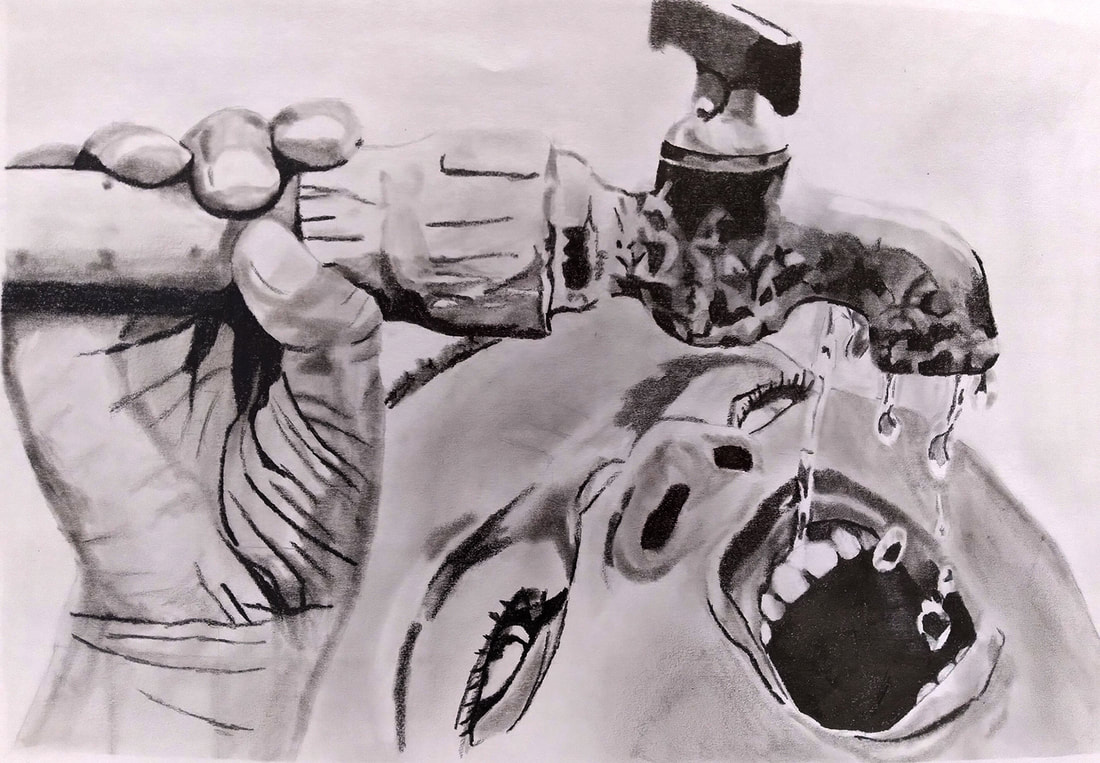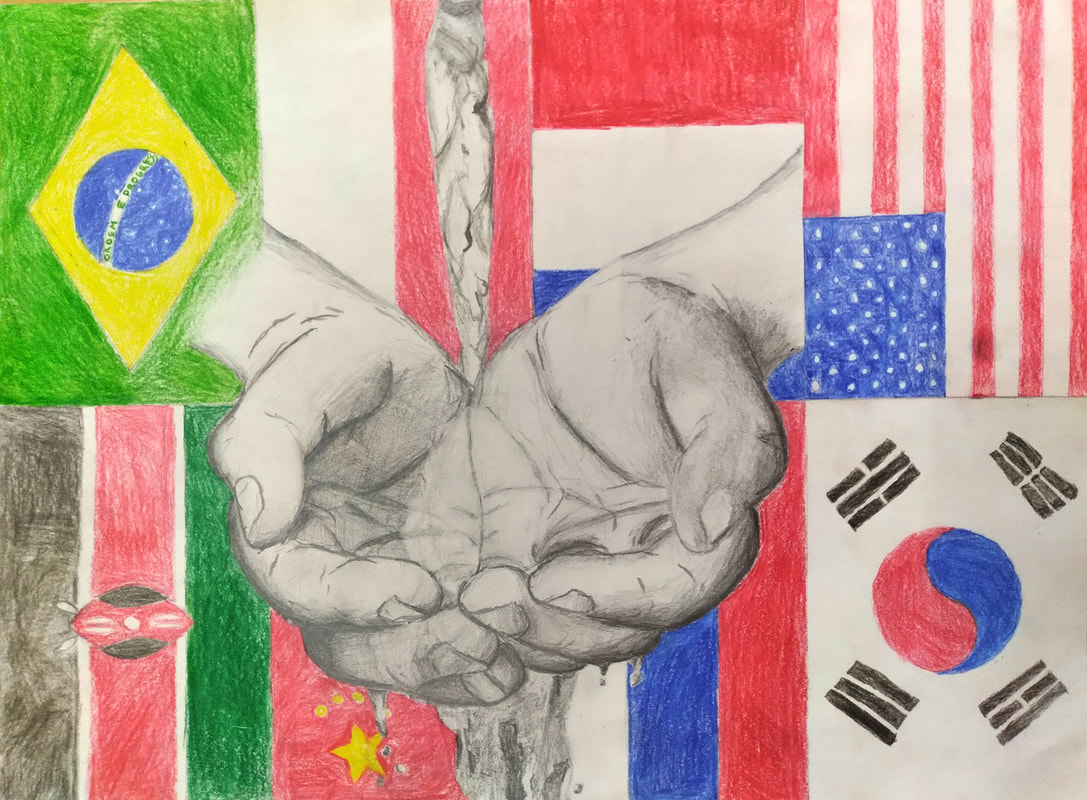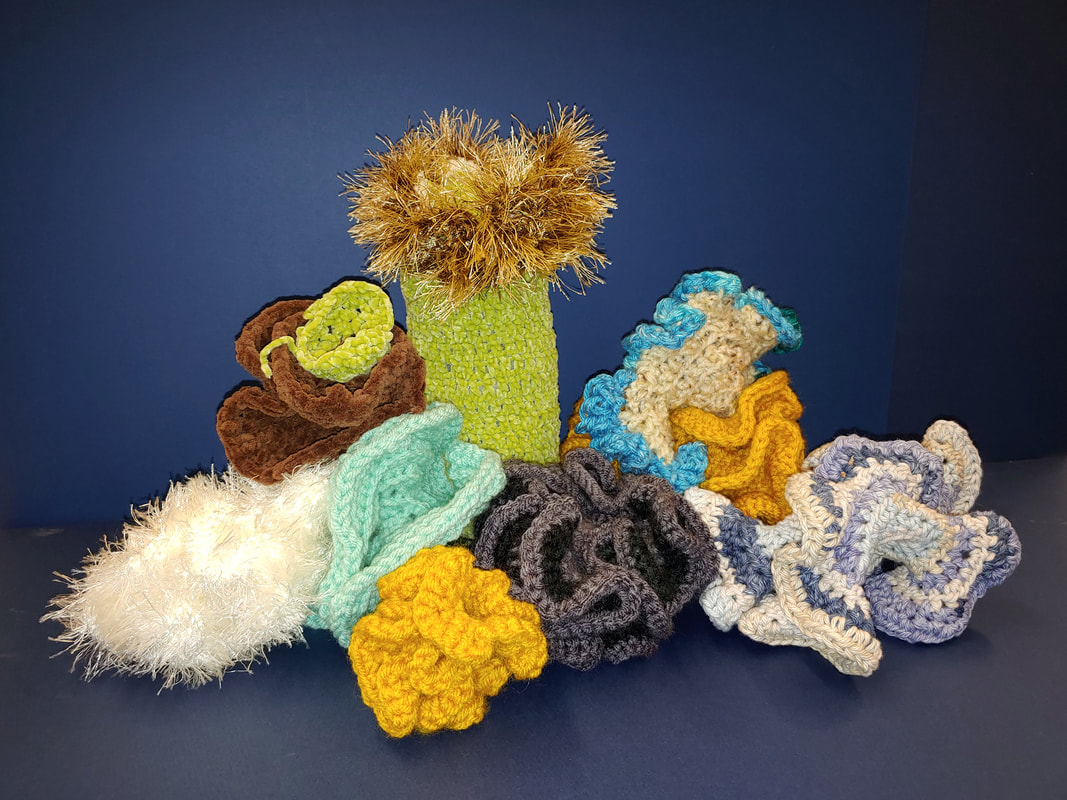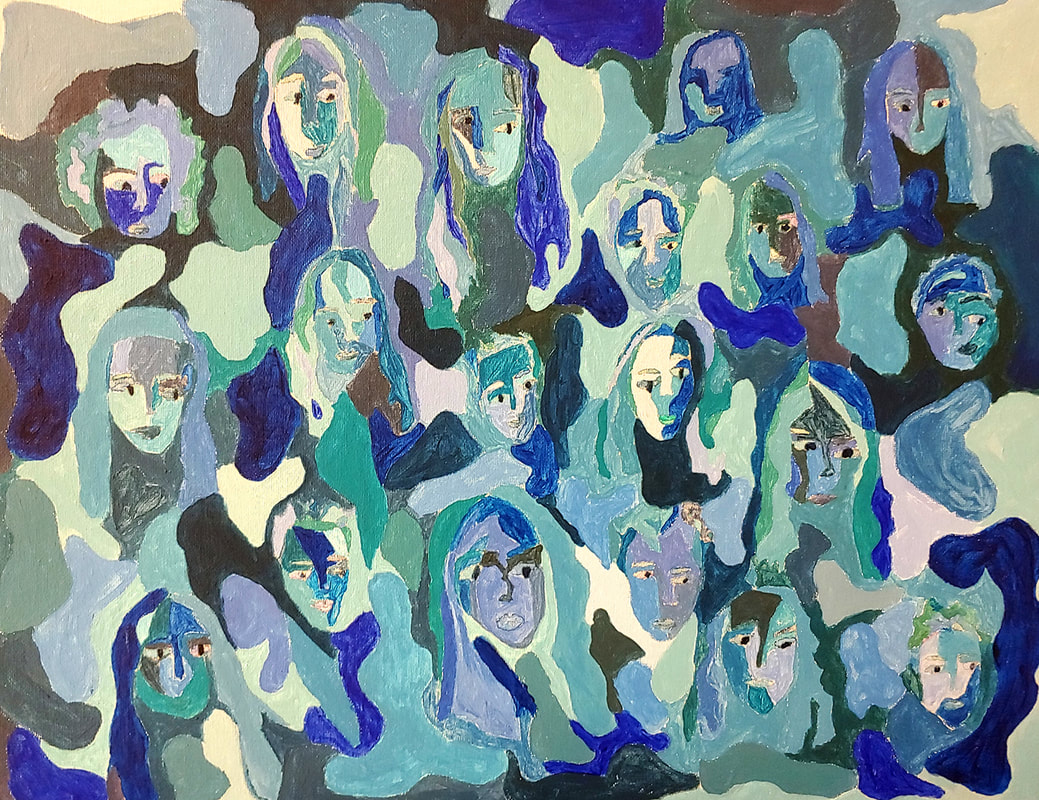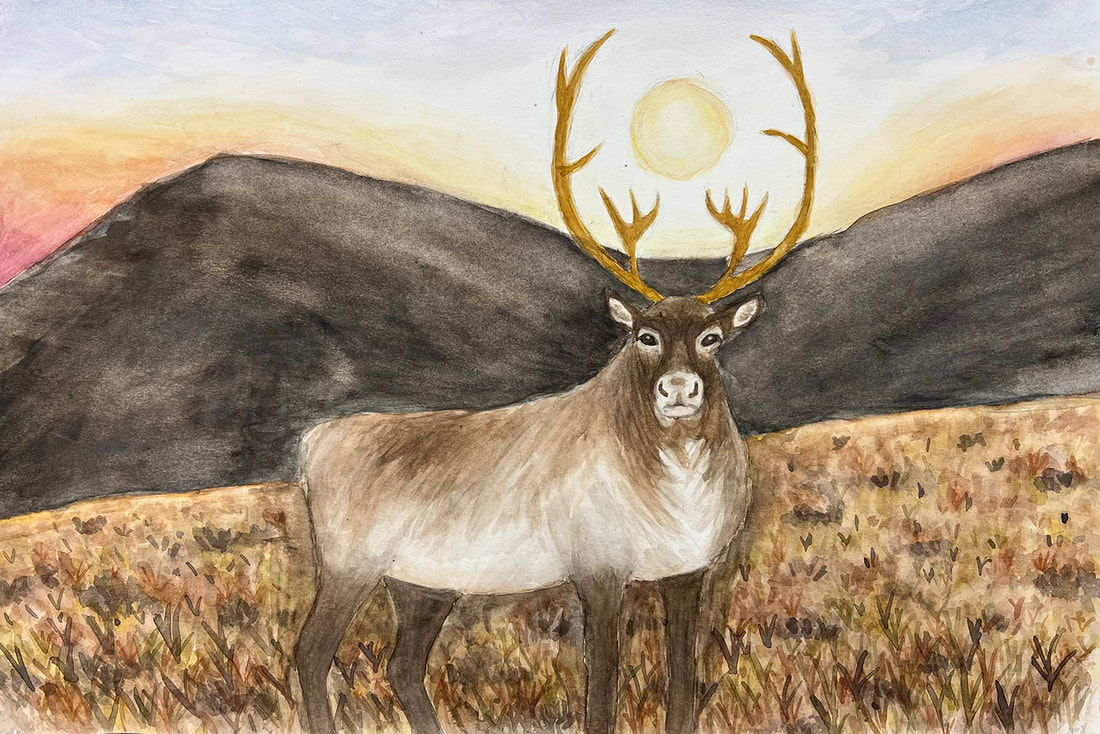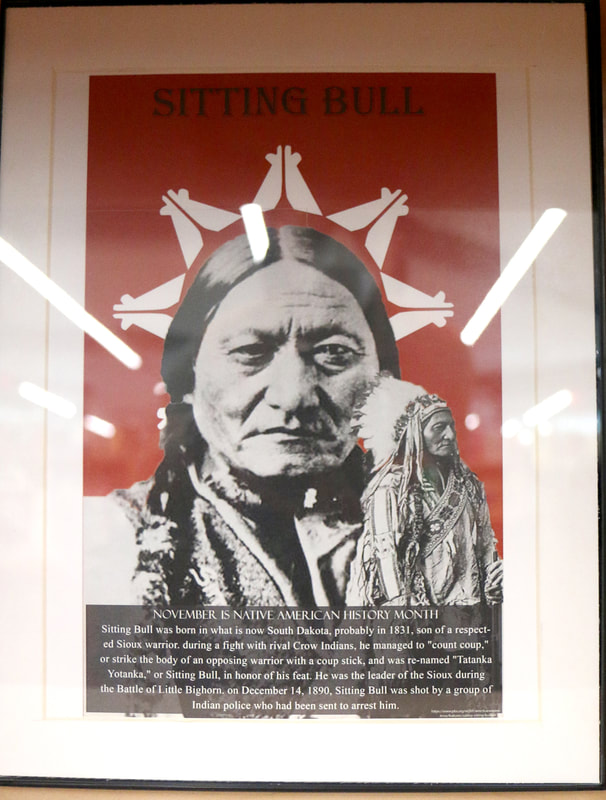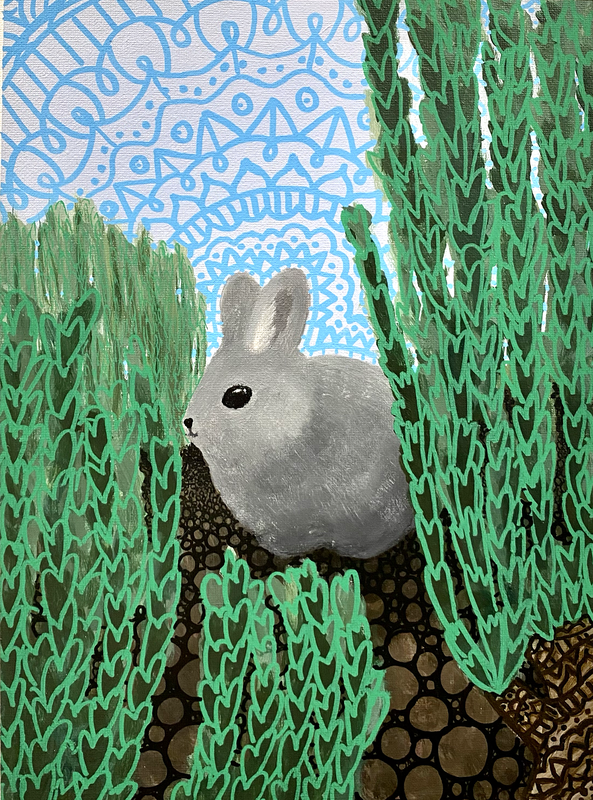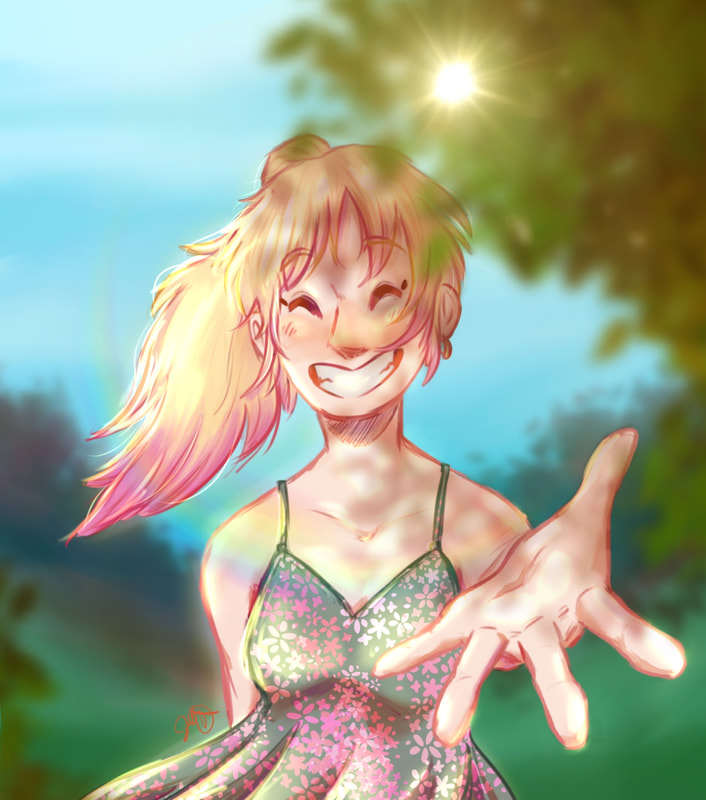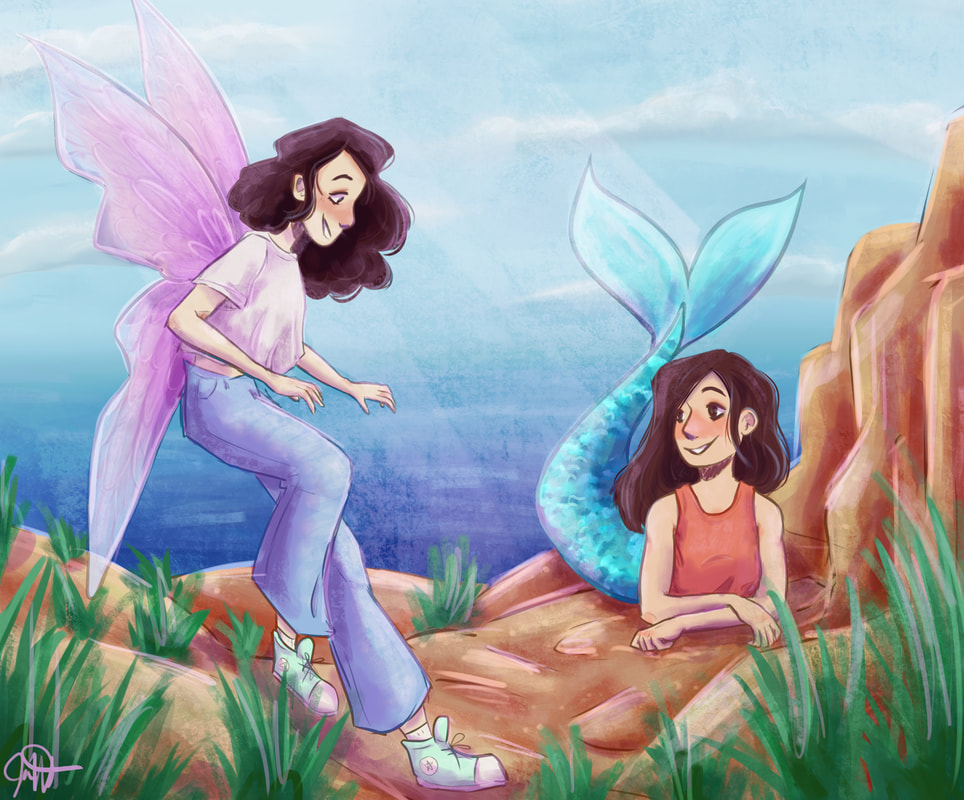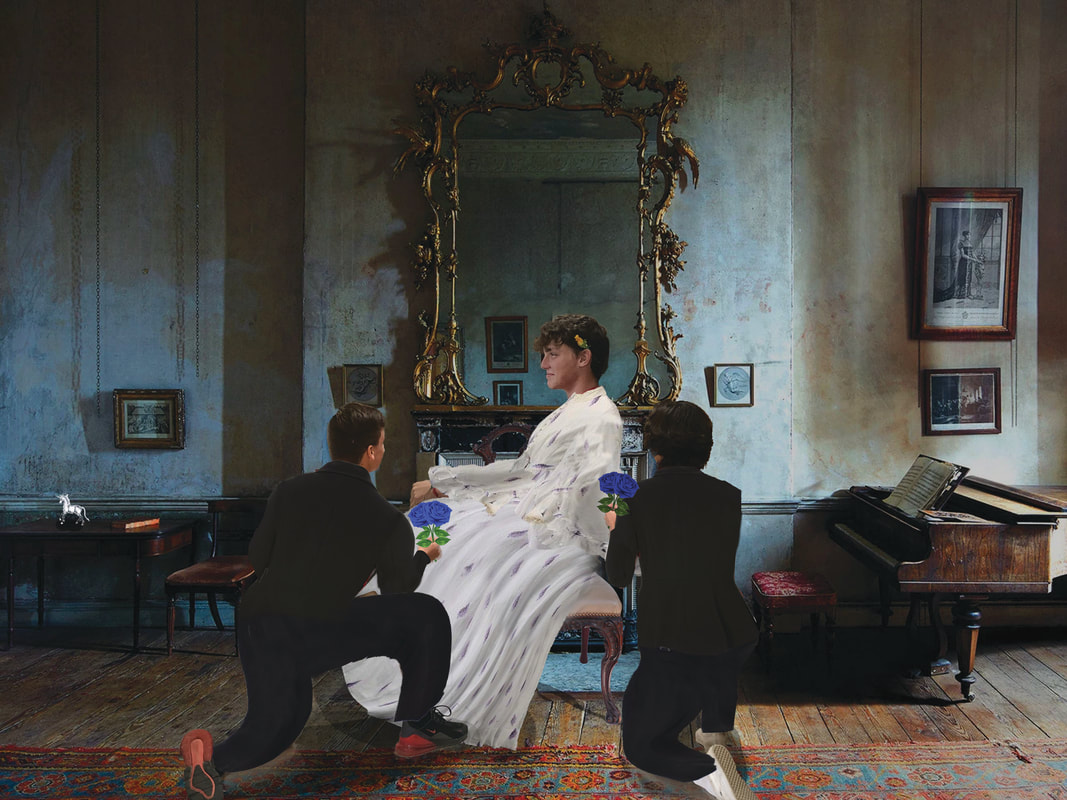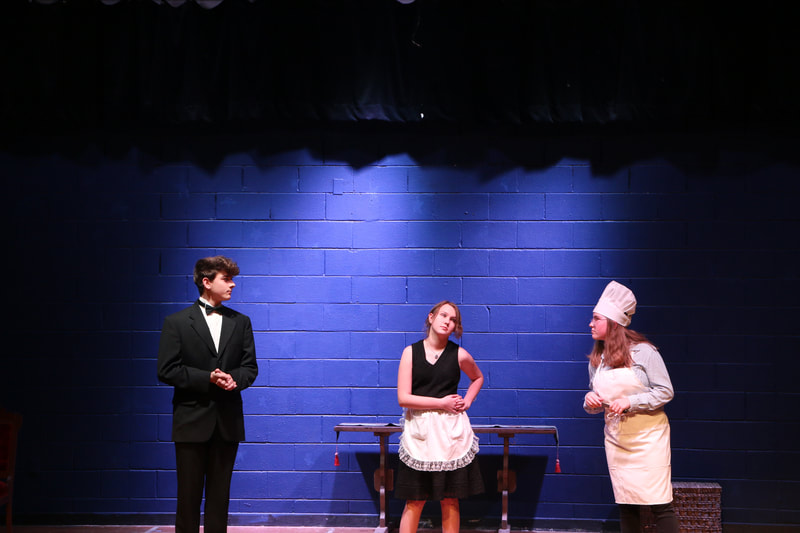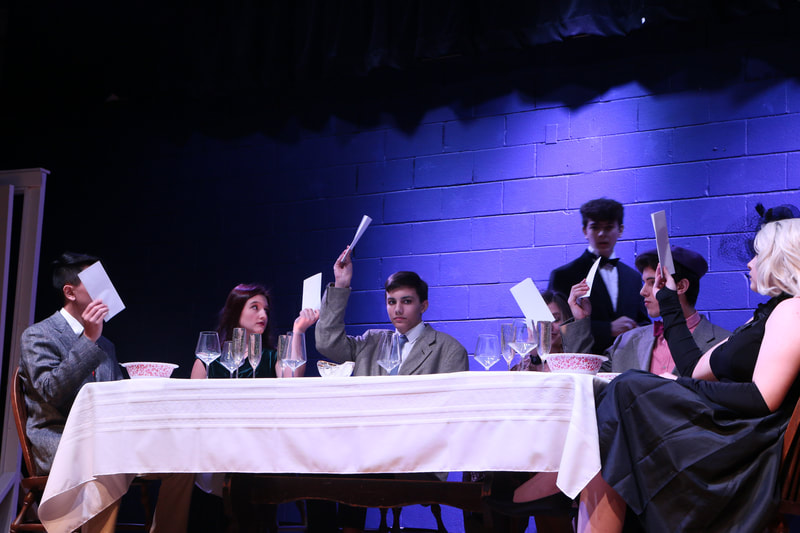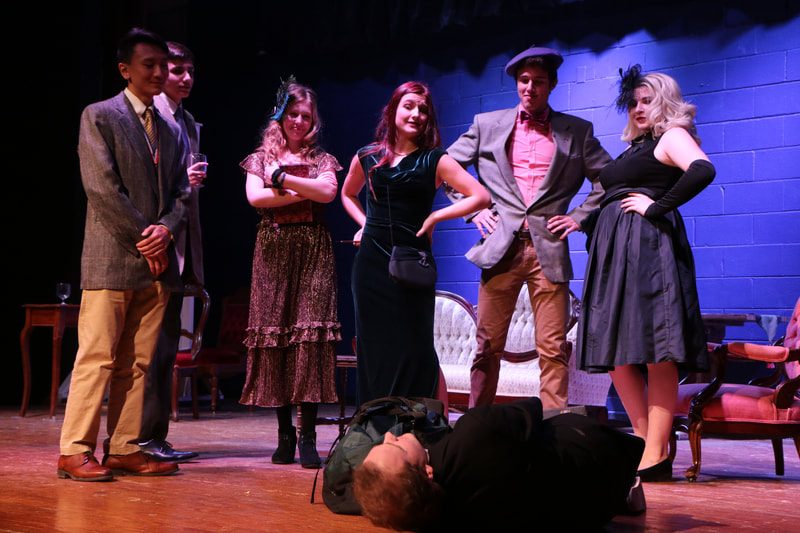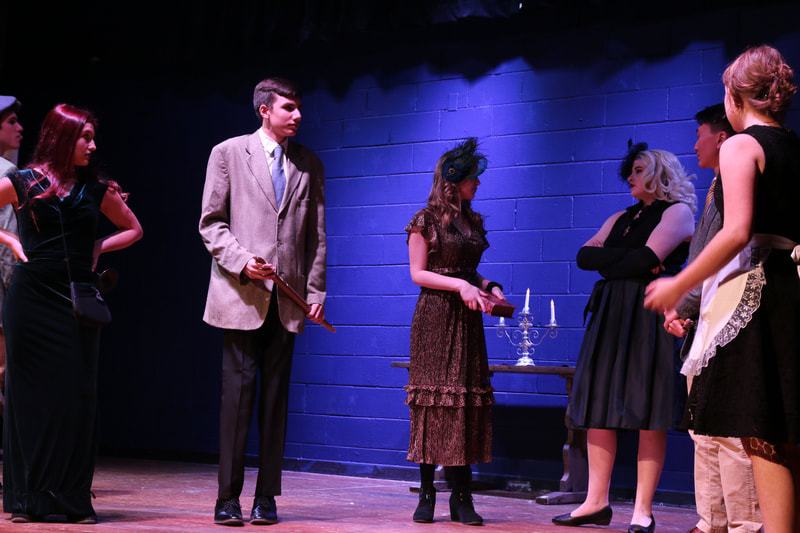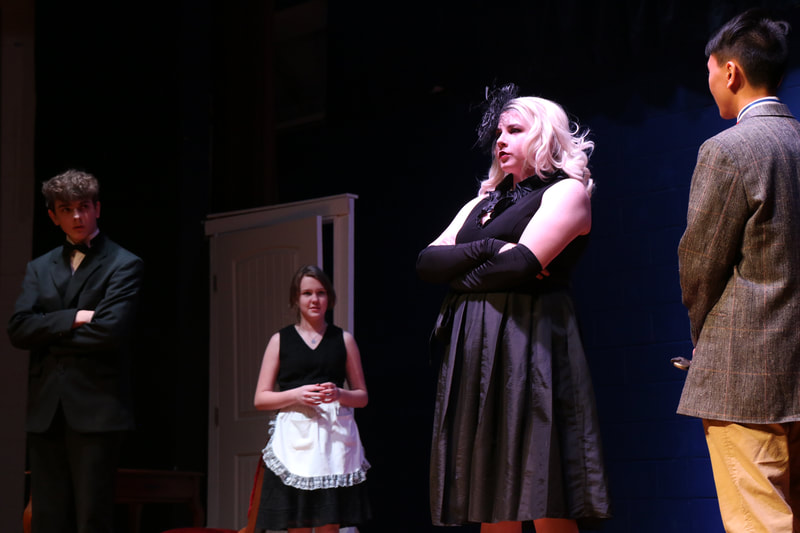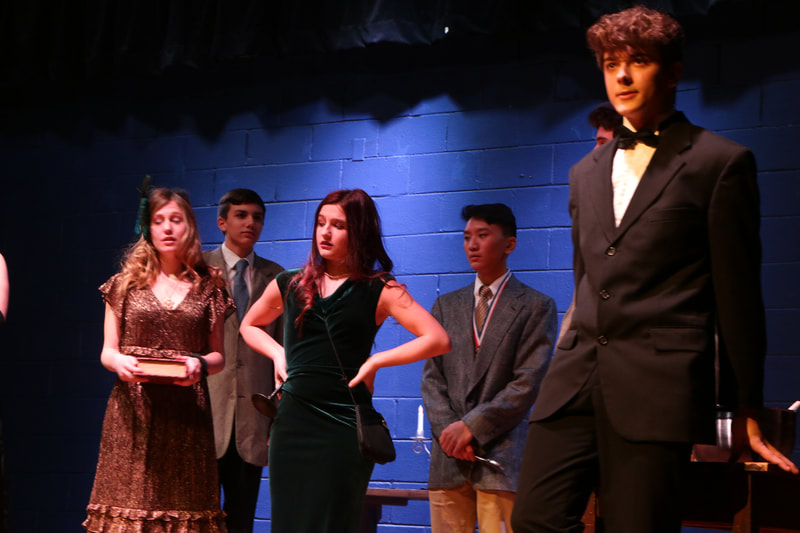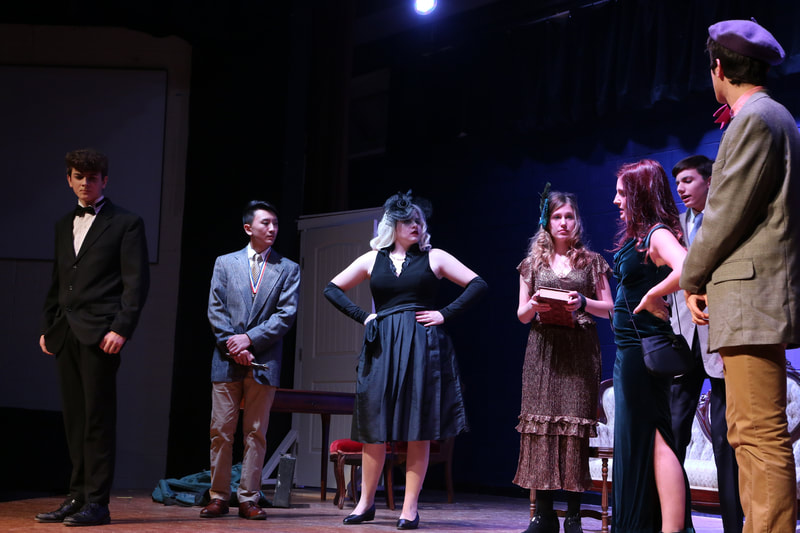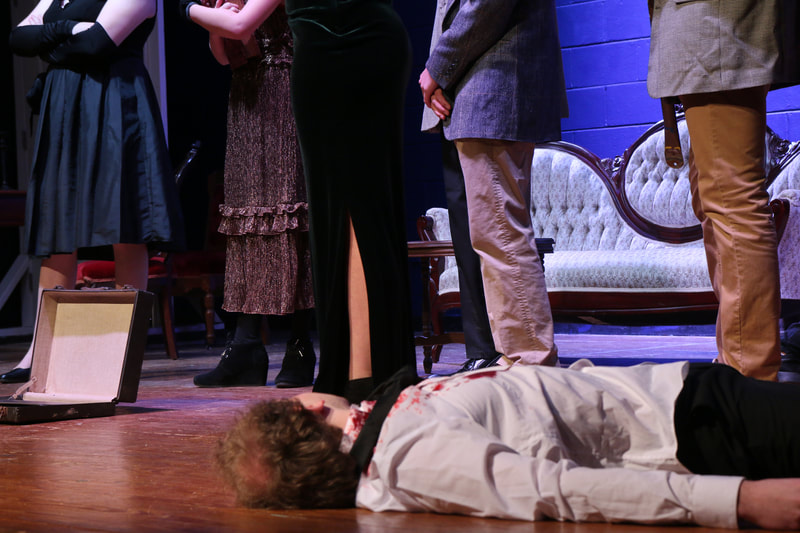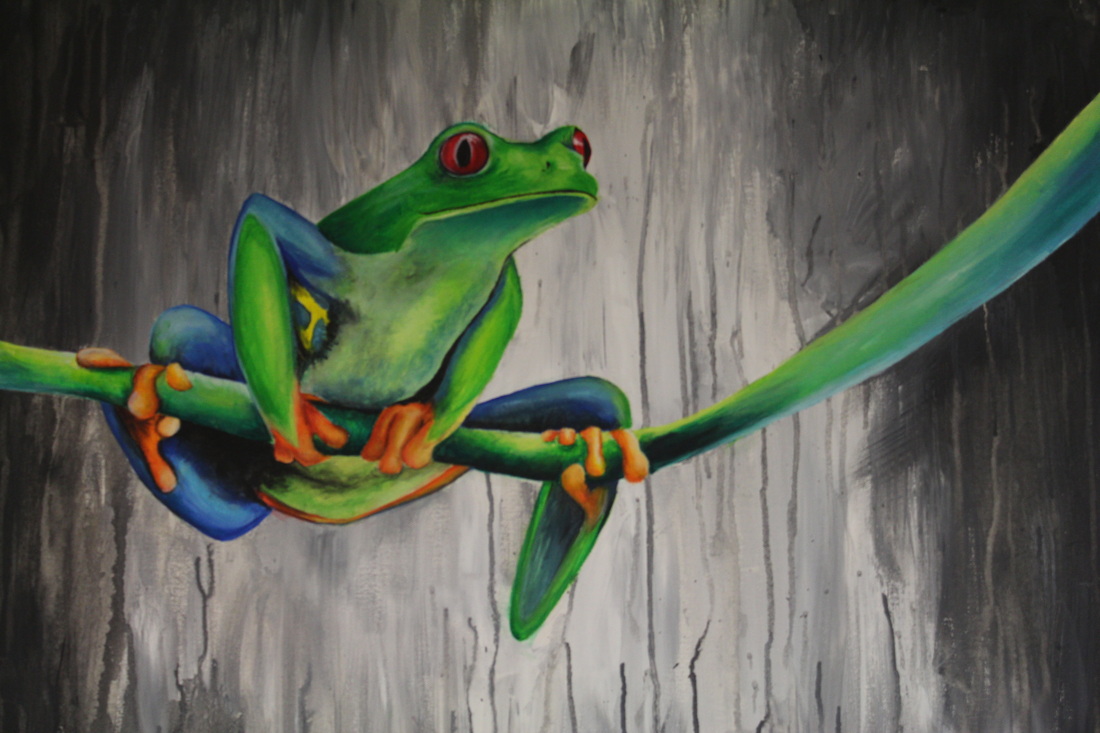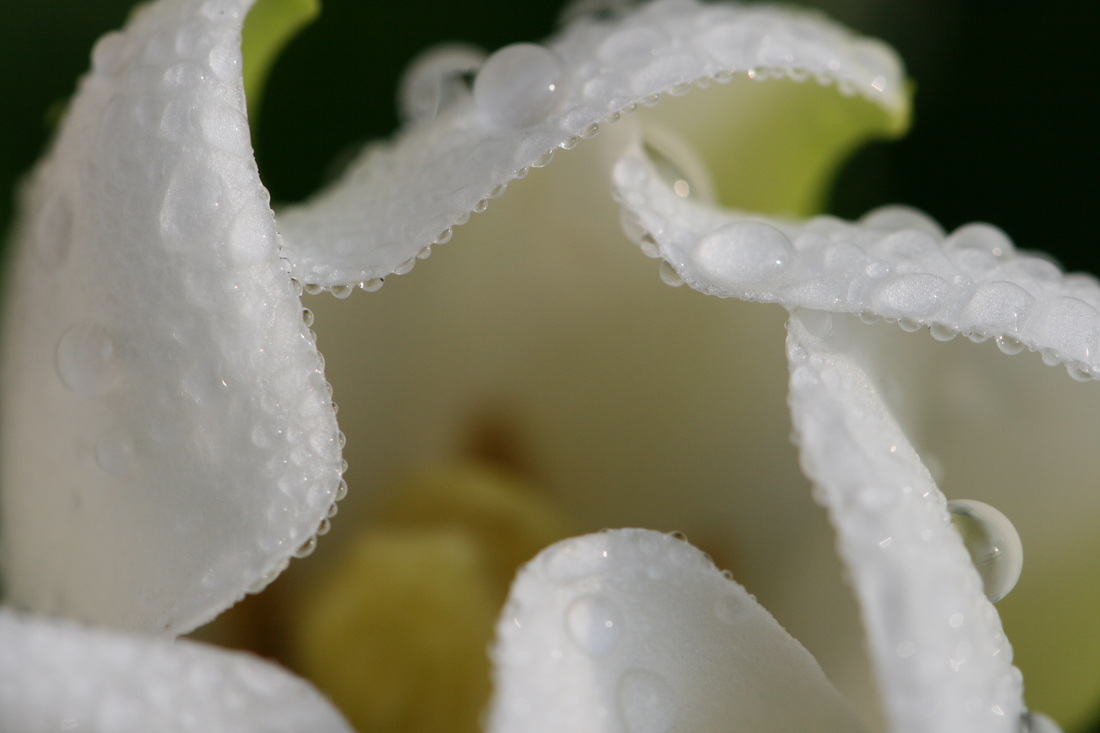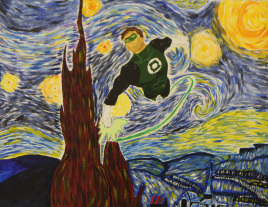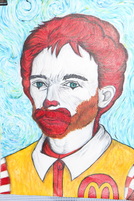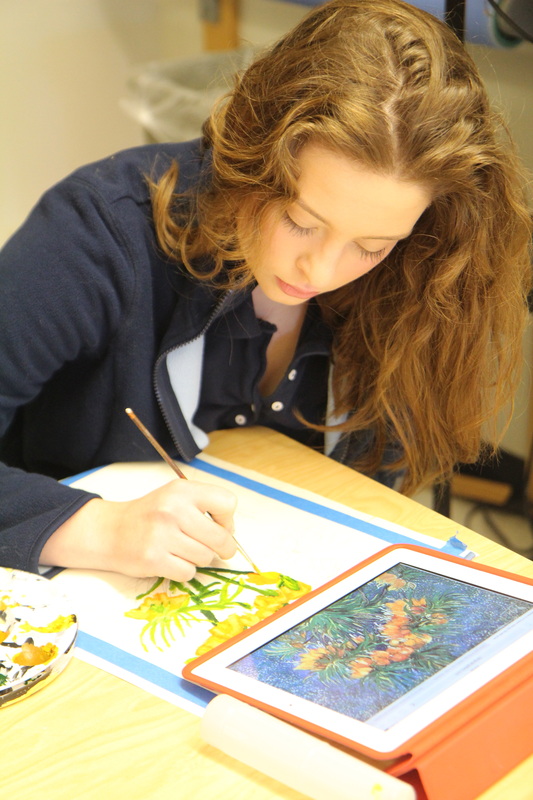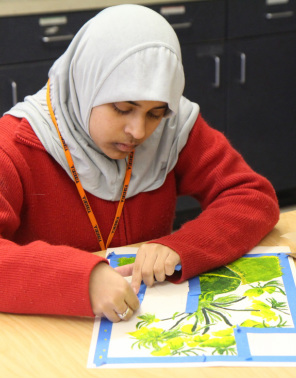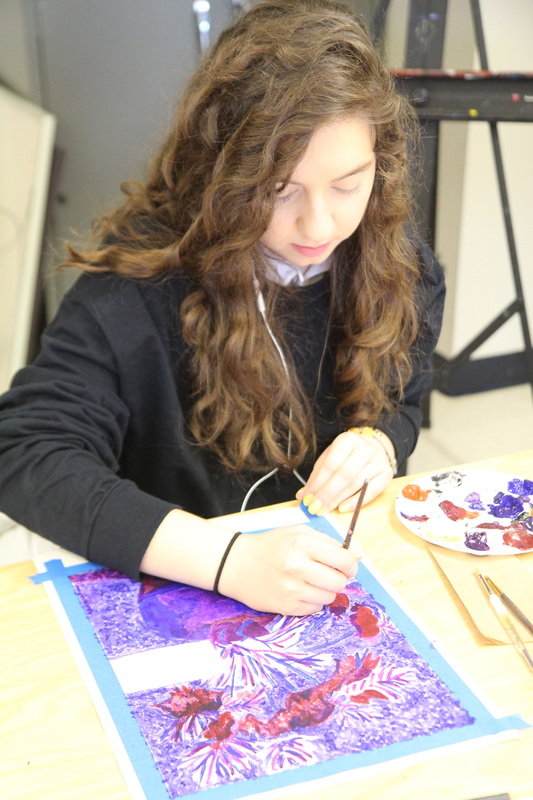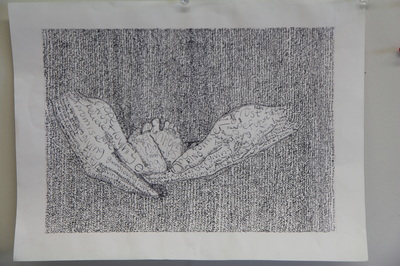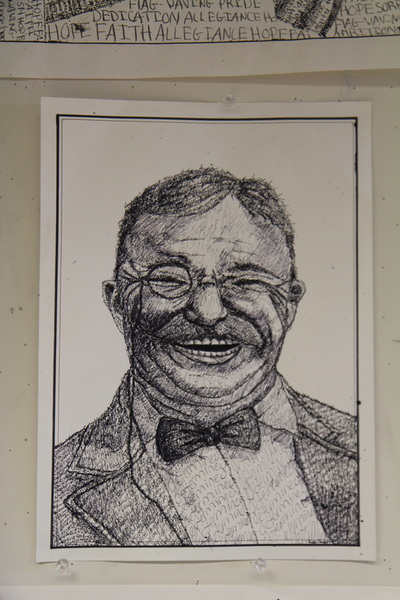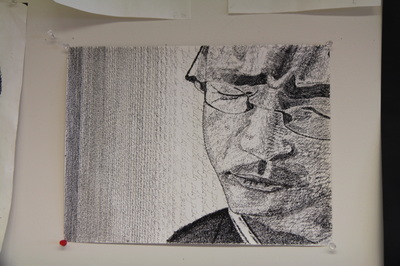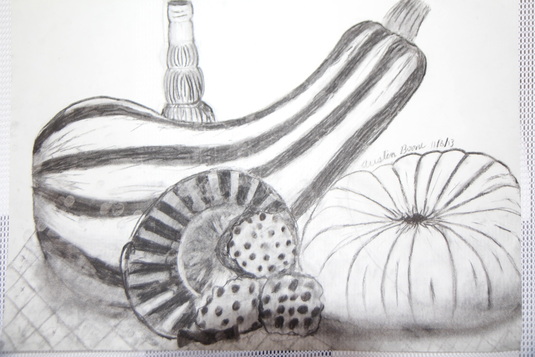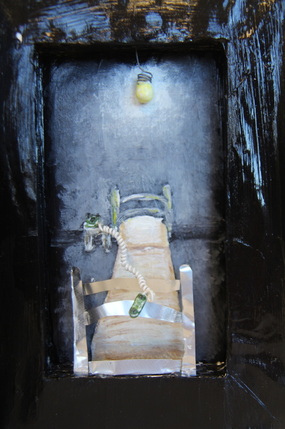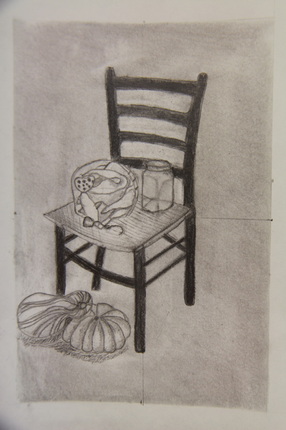International students find ways to show style
By Lauren Boone
Is there a difference in the way international students and American students dress at North Cross?
Although students must wear red, white or black polos, khaki or black pants and khaki or plaid skirts, every student has their own style.
Both international and American students dress and accessorize uniquely in ways that they can without breaking the dress code. With their jewelry, jackets, sweaters, shoes and socks, students can express themselves. In the fall and winter, boys usually wear hoodies, quarter-zips and jackets with their khaki or black pants. Girls usually wear any sweater or hoodie they choose, as long as it is black, white, gray or red with their jackets as well. Some wear complimentary vests with their sweaters or polos. North Cross has a modest dress code but students are able to include accessories and personal pieces in their daily wear.
I have noticed a trend in some international students with their shoes and hoodies. Spanish student Mercedes Herrera ‘27 customizes them with signatures, drawings and quotes. Her white shoes and white hoodie are covered in colorful writing and pictures. Spanish speaking countries’ flags are pictured, such as Spain and Puerto Rico. I have also noticed it with Bob Almenas ‘25, who wears shirts with signatures written on them. I also see a trend in shoe brands. European boys tend to wear the popular Nikes, New Balances and even Converse. Besides Adidas, they wear American brands instead of European ones. Girls tend to wear the same brands, especially Nike, and Converse. Gabriel Ramirez ‘25 wears navy New Balance sneakers and Alejandro Almenas ‘25 wears black New Balance shoes. Alejandro Zuniga ‘26 often wears black Adidas sneakers. Cesar Suarez ‘25 wears Nike Air Force 1s with a Naruto design. Nerea Cruz ‘24 wears white platform Converse and Paola Gorris wears white Air Force 1s. I haven’t noticed any Spanish or European shoe brands among the students.
Our Chinese and Vietnamese students also follow the Nike and Adidas trend in their flashy Jordans and Foam Runners. Another student Nguyen Dinh ‘26 wears colorful blue and orange Hoka sneakers. Eason Zhou ‘24 has a diverse collection of Jordans but often wears his “wheat” Air Jordan 6s. Brooklyn Chen ‘25 has Adidas Foam Runners in the color “Sulfur.”
Students in the high school, whether international or American, wear pretty similar shoes.
Is there a difference in the way international students and American students dress at North Cross?
Although students must wear red, white or black polos, khaki or black pants and khaki or plaid skirts, every student has their own style.
Both international and American students dress and accessorize uniquely in ways that they can without breaking the dress code. With their jewelry, jackets, sweaters, shoes and socks, students can express themselves. In the fall and winter, boys usually wear hoodies, quarter-zips and jackets with their khaki or black pants. Girls usually wear any sweater or hoodie they choose, as long as it is black, white, gray or red with their jackets as well. Some wear complimentary vests with their sweaters or polos. North Cross has a modest dress code but students are able to include accessories and personal pieces in their daily wear.
I have noticed a trend in some international students with their shoes and hoodies. Spanish student Mercedes Herrera ‘27 customizes them with signatures, drawings and quotes. Her white shoes and white hoodie are covered in colorful writing and pictures. Spanish speaking countries’ flags are pictured, such as Spain and Puerto Rico. I have also noticed it with Bob Almenas ‘25, who wears shirts with signatures written on them. I also see a trend in shoe brands. European boys tend to wear the popular Nikes, New Balances and even Converse. Besides Adidas, they wear American brands instead of European ones. Girls tend to wear the same brands, especially Nike, and Converse. Gabriel Ramirez ‘25 wears navy New Balance sneakers and Alejandro Almenas ‘25 wears black New Balance shoes. Alejandro Zuniga ‘26 often wears black Adidas sneakers. Cesar Suarez ‘25 wears Nike Air Force 1s with a Naruto design. Nerea Cruz ‘24 wears white platform Converse and Paola Gorris wears white Air Force 1s. I haven’t noticed any Spanish or European shoe brands among the students.
Our Chinese and Vietnamese students also follow the Nike and Adidas trend in their flashy Jordans and Foam Runners. Another student Nguyen Dinh ‘26 wears colorful blue and orange Hoka sneakers. Eason Zhou ‘24 has a diverse collection of Jordans but often wears his “wheat” Air Jordan 6s. Brooklyn Chen ‘25 has Adidas Foam Runners in the color “Sulfur.”
Students in the high school, whether international or American, wear pretty similar shoes.
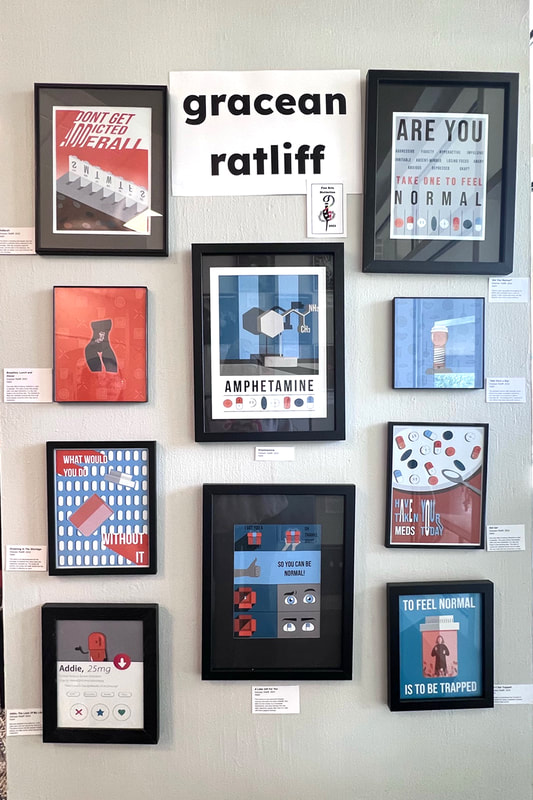
NO PASSING FAD: As part of her Fine Arts Distinction portfolio, Gracean Laine Ratliff’s displayed her AP Art project in the Logan Gallery within the Wenk Student Commons. The series dealt with the topic of her DeHart Project: “Wrapping the Neurotypical Brain around a Neurodivergent One.” She won the Graphic Design Award as a junior and the Art Award as a senior while MVP of two sports. Photo by Rabia Ferron
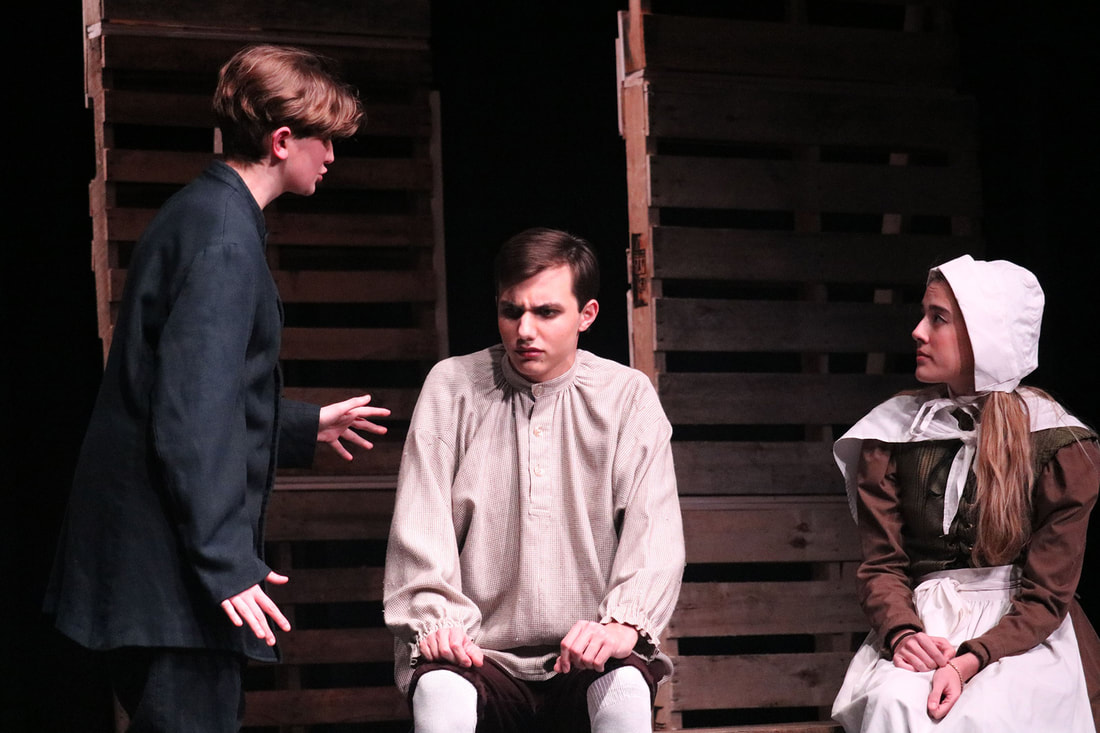
MULTI-TALENTED SENIORS: Nico Eagan, Colin Chandel and Natalie Jensen explore the complexities of Arthur Miller’s The Crucible in January. Eagan also won the DeHart Award and served as Secretary of GSA while earning the Fine Arts Distinction. STEM scholar Chandel won multiple awards en route to class Valedictorian and played a key role in helping tennis win another state championship. Jensen was editor-in-chief of the yearbook while playing three sports and earning the Global Studies diploma. Photo by Eason Zhou
NCS artists respond to joy harJo's poetry in Logan Gallery across from fireplace
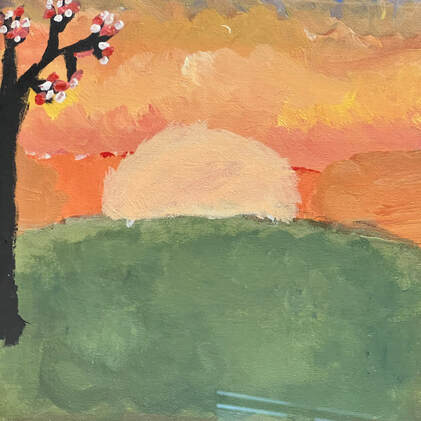
Mia Flores ‘26 created the painting “Field of Joy” in her intro to art class this year. She was inspired by the poem “Bless this Land” by Joy Harjo. Mia’s painting shows a big green grass field that starts at the bottom of the canvas and goes up about half way. The center of the field is darker and it gets lighter and brighter green at the edges. The top of the field is curved so that it looks like the ground is disappearing into the distance. The paint is splotchy and textured so that you can see the brush strokes. At the bottom the sky is a light orange that fades into a bright yellow and then into blue. There is a big pale yellow sun in the middle of the painting, falling behind the field. ”I love sunrises in the morning.” Mia says “I wanted the beautiful sunrise to stand out.” The rest of the painting has a dark tree with little pink and red flowers on the left. Her painting shows the beauty of nature and represents the poem bless this land through it. - Veronica Weston

Mason Jolley ’26 calls this piece “Change of worlds.” He based his mixed media piece on the Joy Harjo poem “Don’t Bother the Earth Spirit” He says “This piece reflects the way the land has changed from natural beauty to more tech based cities.” He divided the whole piece into left and right parts. With the life of nature on the left and the modern city on the right. Then Mason expresses the natural and modern differences between the left and right side through different color distribution. On the left, he used more colors to depict natural landscapes, such as green and brown to paint trees, land and village tents. And blue to paint the sky and river. On the right, Mason uses much fewer colors than the left, only blue, gray and black. Because it is a city, there are only tall buildings at a glance, and you can’t see the trees, so it lacks a lot of color. Only blue, gray and black can depict the scene of tall buildings. Through the comparison of the left and right parts, people can feel the passage of time. With the progress of human science and technology over time, the city is also expanding. However, with the expansion of the city, people cut down the trees to build buildings and cities, which has also caused great damage to the natural environment, making the city lack the color of nature. - Jiale Qin
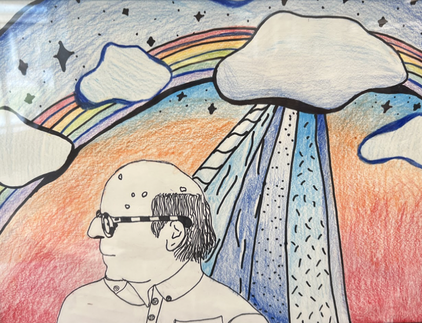
Winnie Fergusons’ art piece called “Somewhere over the rainbow” is inspired by the poem “Seven Generations" by Joy Harjo. In said piece, One can see an old man who is wearing striped glasses looking to his right. THis person is Winnie’s grandpa. He is not in color, He is in black and white and outlined with a thin black line. The background has a rainbow peeking through blue ombre clouds. Additionally, there are black stars above the rainbow and pink and orange ombre designs below the rainbow. There are lines of patterns coming from a cloud behind her grandpa, these include polka dots, stripes, squiggly lines and one with no patterns. “Even though my drawing can bring some pain and sadness because my Grandpa is not with us anymore,” Winnie wrote, “I made it feel happy by adding a bunch of colors and fund details to remind me of the happiness he brought to people.” - Massoki Maka
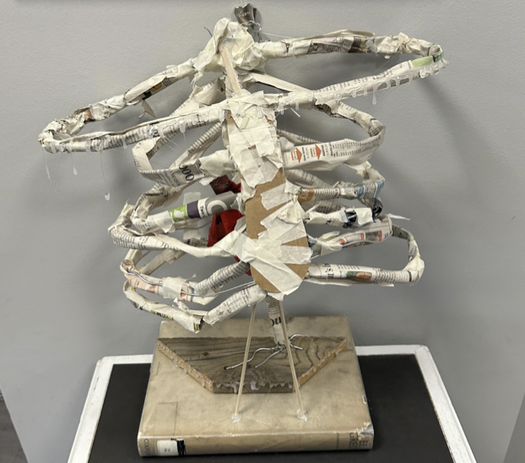
Valeria Dancea ‘25 called this piece “Paper Hearts.” This piece is a paper rib cage with a paper heart in the middle “it represents the fragile and rough composition of my rib cage” she opened her caption with. She was inspired by “Joy Harjo's expression of love and loss in many of her poems.” I recognized there were various drips of glue hanging on the ribs as well as the cardboard chest plate used to hold it all together. What this sculpture lacks in color it gains in creativity, I only recognize two distinguished colors in this piece, white and red. “The heart is bold and bright but only protected by some flimsy ribs,” she said. She uses this to represent how vulnerable peoples hearts can be to emotion. “I chose these materials over much more sturdy, elegant options, because I find art much more meaningful to me when I'm reminded of the artist's humanity and genuine emotion that hasn't had the chance to be polished away.” - By Tonio Mack

This piece is called “Who am I?” by Eleena Dinh ‘23. Her art was based on the poem “I’m nobody! Who are you?”. The painting has a solid blue background. Inside is a dark blue water-like substance hugging a person. The person wears a white shirt, lighter blue pants, and bright yellow socks. Her inspiration comes from when people doubt themselves and lose themselves. “We just stuck there, never get out of our head, at the end, we still there, losing everything without knowing what we have lost and missed,” quoted from Eleena’s caption. The dark shade of blue expresses negative thoughts. The dark thoughts hugging the person represent how it will start to cover and then people will be buried deep inside no exits. The message of this piece is like encouragement to the Native Americans but also represents the sadness of the people who had lost their land and people. Eleena sketched the piece on canvas and then she used acrylic paints. Last, she retouched the details with markers. - By Nhi Le
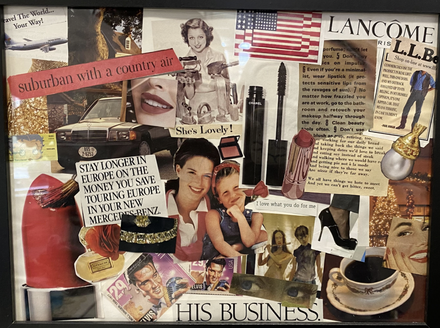
Lauren Boone ‘25 names this piece “Granddaughters”. She did her collage piece about the Joy Harjo poem “Granddaughters” in An American Sunrise. Her collage includes photos she cut from old magazines and texts. All of the images in the collage reminded her of her grandmother. The images she chose all look vintage and old like the 1900s, but each of the images looks fancy, fabulous and it emphasizes the beauty of all the grandmothers when they were still young. Boone said, “One of the main magazines I used dates back to 1949 which was a year my Grannie was alive in.” Her piece mainly includes young girls, fashion, and beauty. It all makes her remember her grandmother. Clearly, the images look old, but everybody can still see the luxurious, fancy, youthful and pretty vibes in the young women who are now our grandmothers. - Lam Do
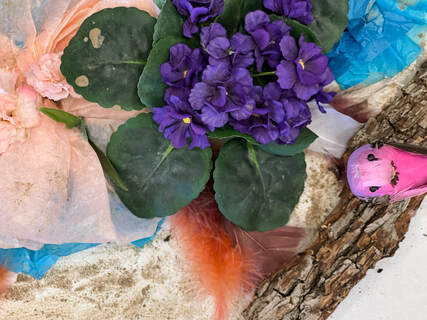
Maddy Dalton ‘26 calls this piece “Birds of Grandparents.” She based her piece on the Joy Harjo poem “Washing My Mother’s Body.” The canvas is mostly covered in a mud mixture. On top of that, there are feathers, flowers, and two birds. Dalton wrote, “I put two birds in my project to represent my grandparents. My grandparents both loved birds, and Joy Harjo had a lot of birds in her project.” The flowers are blue, purple, and pink. They are all stacked on top of each other. Next to the flowers is a branch where one of the birds was sitting. The bird is pink with a hint of purple and a few black feathers. Across the canvas, there is a stack of pink and blue tissue paper with red and yellow feathers sticking out of it, and next to it, there is another bird that was red and had both red and black feathers. - Anne Bradley Cullen
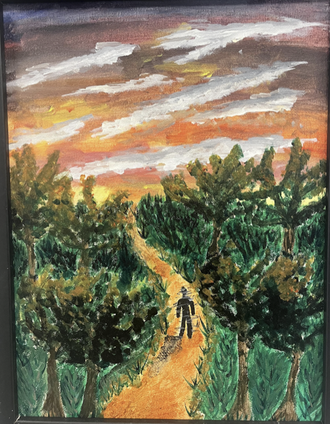
Jahanvi Patel ‘25 made this piece called “Never looking back”. This piece of art is a reflection of a poem talking about Joy Harjo’s grandfather. The name “Never looking back” was inspired by her grandfather talking about how he was forced to leave his land as a Native American. The piece of art that Jahanvi Patel made was an abstract image of the grandfather “as a shadowy figure walking through the distance and never looking back”. The artwork is full of color while sticking to a color pallet of more intimidating colors such as red and dark yellows and oranges. It portrays Joy Harjo’s grandfather as he is walking away towards what looks to be a dramatic sunset through the woods and grasslands. She does a good job of incorporating the clouds into the feel of the painting. Rather than big fluffy clouds associated with warm happy summers. They are more spiky and thin, making for a more ominous sky. - Rowan Anderson
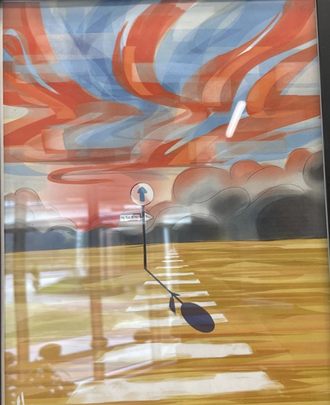
I chose Ethan Ferguson’s ‘23 artwork “Sunrise” for its creativity amidst the tragedy and reality of the story “An American Sunrise.” He took inspiration from a quote, “We were running out of breath, as we ran out to meet ourselves,” in the Joy Harjo poem. The illustration depicts a route leading to the sunrise. It incorporates modern day traffic guides like crosswalk and road sign which reflects the Trail of Tears through the desert. The painting is filled up with a variety of colors such as blue and red for the sky and black clouds to emphasize the struggle of people who were fighting for sovereignty, integrity, and humanity. - Dat Bui
Monday songs
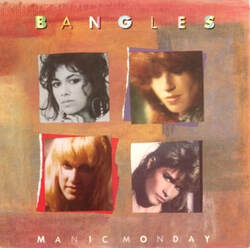
Today was a good day and I have been happy all day! I did well on both of my quizzes and I have baseball later so today is a really exciting day. I'm nervous about tomorrow's game against a really good 4A public school, but I'm excited to get back on the field. This Monday has made me remember a great song that was very popular in the day called “Manic Monday” by The Bangles. According to Wikipedia source "Manic Monday" is a song written by American musician Prince, but is better known from the version recorded by the American pop rock band the Bangles, which was the first single released from their second studio album, Different Light. This song is one of the most popular that this band has ever made (63.4 million views on Youtube). There are two other songs that were big hits for the band: “Eternal Flame” (122.4 million listens on Youtube) and “Walk Like an Egyptian” (111.3 million listens on Youtube). A lyric from the song “Manic Monday”that represents my Monday is “Six o'clock already, I was just in the middle of a dream.” Every Monday I get this feeling, but then I actually get to school and it's an amazing day. Today was a very cheerful day with bright events that made me happy, and I'm going out to eat tonight! - Tristan Lange

The song I found does not have the specific word “Monday” but it was made and performed by a Vietnamese artist named “HIEUTHUHAI” or “HIEUMONDAY.” He is a famous and young Vietnamese rapper with almost 500k subscribers on Youtube and 866k monthly listeners. By giving himself that rap name, people can easily figure out the mood of the songs he publishes without even listening to it. The song I choose from is “ Bat Nhac Len” or “Play the Song” by “HIEUMONDAY.” It is an immensely happy song with such a jubilant melody and enthusiastic lyrics. I usually play the song every morning when I wake up as a great motivation for the rest of the day. - Dat Bui
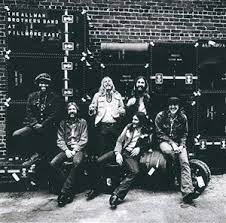
My Monday has been very slow. I feel like the day has lasted forever. That's why I feel like the song Stormy Monday by T-Bone Walker and covered live by The Allman Brothers Band fits my mood. One of the lyrics says, “They call it stormy Monday, but Tuesday's just as bad”. I agree because I don't think tomorrow will be very different. Maybe next Monday will be better because Mondays are supposed to be one of the most productive days. Business News Daily says accountemps discovered that Monday and Tuesday are the two most productive days of the week for employees. Specifically, 39 percent of human resources managers think employees get the most done on Tuesdays, while 24 percent believe productivity peaks on Mondays. This is a lot compared to the 14 percent of those surveyed that feel the most work gets accomplished on Wednesday. - Veronica Weston
Art show highlights student entries to competitions like Sister Cities
“THE LAST DROP”: Denzel Marufu’s “The Last Drop” depicts a child desperate to get every drop of water that falls from the faucet. This piece was created for the competition “Sister Cities” in which artists were directed to follow the theme “water shortage.” Marufu says he chose a child because “the concept of the child drinking water shows that it is mostly children who are affected by the lack of water,” This piece now hangs in the Logan Gallery. Helen Hertz
MORE HANDS: Jack Patterson created an eye-capturing piece that won a Sister Cities competition. He entered his artwork as an assignment for Intermediate Art students with teacher Amy Jackson. Two hands cup droplets of water with international flags of the countries where Roanoke has sister cities in the background. This piece represents North Cross very well, according to Ned Tower ‘24. “Especially this year, our school has had so many international students from so many places, and it’s been really fun to sort of learn about other different places, different cultures, working together to hold the water up and take a sip.” By Nadia Hosny
Crochet coral reef by students of Amy Jackson
“The Water Well”: A painting by Ava Dalaski ‘25 in acrylic on canvas for the Sister Cities art contest. It shows several faces done in different shades of blue giving the effect of water, puddles and the like. While the shapes are very free and loose, you can still tell they’re meant to be faces and it gives a nice and interesting appearance. By Ani Eagan
Endangered Species
SITTING BULL: Displayed in the Kemper Library, this art piece, created by Intermediate Graphic Design student Paul Schueler ‘24, shows the story of Sitting Bull, a leader of the Sioux group of Native American tribes in the 1800s. This graphic design piece was made during November of 2021, Native American Heritage Month. “I think that it is incredibly important for the history of Native American peoples to be learned, not just in terms of their various cultures, but also when it comes to their mistreatment throughout the centuries,” said Aashee Nanda ‘24, “Like with the history of other people groups, it allows us to understand the wrongs of the past and work to make conditions better for those who have been rendered disadvantaged.” Displayed next to this piece is this year’s summer reading book required for the entire Upper School, An American Sunrise. It contains a collection of poems by Joy Harjo, detailing the story of her Native American ancestors. Hania Raza
Big Beautful Bunny World by Indira Weed ‘25
Asherah Capellaro leads chorale program
By Kenzie Raub
Professional singer and performer Asherah Capellaro arrived in Roanoke in January after studying music and vocal performance as far away as Lucca, Italy.
Capellaro was born in Fairfax, Virginia, however she moved to Linden, Virginia before she turned 1. She grew up in Linden and later moved to Strasburg, Virginia around 8th or 9th grade, where she stayed until she went off to college. Throughout her life, music has been a huge part of Capellaro’s life, ever since she began playing piano at 6. Now that she has become a teacher, she wants to share her passion for singing and music with her students.
“What I love about teaching music are those very, very, unfortunately rare occasions where you can see something click or change in a student’s perception,” said Capellaro. “Not just in the music in front of them, but about the deeper meaning behind that music and what it speaks to in their lives.”
Capellaro completed her undergraduate at Liberty University and her masters degree at Westminster Choir College. She majored in history for a year, but eventually realized it wasn’t the right path for her and switched back to piano and singing. She ended up with a history minor, a bachelor in music and piano, and a masters of music in vocal performance.
“I did lots of competitions and recitals and performances.,” she said. “I even won trophies and stuff a couple times. When I was in high school, I started to get really good. But then I started doing theater, and I was in my first professional show when I was 15. I did a Christmas show with one of the local theaters, so that was really fun. I almost went to school for theater. I did auditions, I auditioned at colleges for theater programs, and then at the last minute I changed my mind.”
Along with playing piano at the young age of 6, Capellaro also began voice lessons in high school, and later went on to teach her own piano and voice lessons. She taught her lessons independently. Her first real music-related job was directing choirs.
“In my own private studio I started teaching piano lessons in college, and then I started teaching voice lessons after college,” Capellaro said.. “I also simultaneously started directing choirs. I started directing two choirs at the same time. The first one was at Opera Roanoke. I was a chorus master for their shows. I was like their apprentice chorus master because I was in their apprentice program. I also, at the same time, got hired at a Methodist church in Fincastle, the United Methodist church in Fincastle.”{
Eventually, Capellaro was even able to take her growing music career outside of the country.
“I did a summer program in Italy, it was called Canta in Italia,” she said.. “There were, like, 12 of us I think, all either undergrad or grad students who got into the program this year. I didn’t just get in, I had to audition. You go to live in Lucca in Tuscany for, I guess it was like seven weeks. We had a two-hour Italian class at 8 a.m. every week day, and then we had rehearsals, and then we had individual voice lessons and private coachings in the music. We rehearsed scenes from different operas and we also got to do a bunch of amazing stuff.”
Capellaro was particularly in love with the scenery of Italy during her trip there.
“If you ever see coastal towns that have like all the different colored buildings,” she said enthusiastically, “that’s where we were. It was magica.”
Recently, along with directing operas and performing professionally, Capellaro became a music teacher at North Cross.
“It was the middle of Covid and nowhere was doing choir. Like, all the choirs that I had been directing were stopped. Mr. Lamas emailed me in November of 2020 and said ‘Hey, we are looking for a choir director.’ Then I talked to him and found out that everybody here was still in person and that you guys were actually having a choir and I was like whoa, okay, yeah! So I came to North Cross essentially because there was a vacancy and I wanted to be doing music. I was excited to work with you guys. I’d only ever worked with adult choirs, so I was like this is cool, this’ll be something new for me to do.”
Two students of Capellaro, Kaeleigh Howlett, ‘24, and Aashee Nanda, ‘24, spoke about their experiences in her class.
“My favorite part of choir is, of course, the singing and learning new techniques to improve our singing,” said Howlett. “Ms. Capellaro is a great teacher. I really like talking to her before and after class about anything. Ms. Capellaro has helped me on my singing journey by teaching me about the anatomy of our voices and different techniques to improve my singing in general.”
“My favorite part of choir is being able to learn music from or in a variety of different cultures and styles,” said Nanda. “I like Ms. Capellaro a lot! I think her classes are organized and efficient in getting the proper amount of work done for each class. Under her teaching, I’ve improved in my ability to become more mindful of the way in which I sing when it comes to the aperture and how I annunciate my words properly.”
Capellaro also gave some advice to those considering a career in music for when they’re older.
“I would say think really, really hard about that [pursuing a musical career], because if you’re not really willing to bleed for it, you probably shouldn’t do it,” she said.. “And, if you are not willing to sometimes hate music, you shouldn’t do it, because there will be days when you just hate music and you feel like you can not do it anymore. It’s not a hobby when it’s your career, it is what you do to make a living, and it’s really, really hard.”
Professional singer and performer Asherah Capellaro arrived in Roanoke in January after studying music and vocal performance as far away as Lucca, Italy.
Capellaro was born in Fairfax, Virginia, however she moved to Linden, Virginia before she turned 1. She grew up in Linden and later moved to Strasburg, Virginia around 8th or 9th grade, where she stayed until she went off to college. Throughout her life, music has been a huge part of Capellaro’s life, ever since she began playing piano at 6. Now that she has become a teacher, she wants to share her passion for singing and music with her students.
“What I love about teaching music are those very, very, unfortunately rare occasions where you can see something click or change in a student’s perception,” said Capellaro. “Not just in the music in front of them, but about the deeper meaning behind that music and what it speaks to in their lives.”
Capellaro completed her undergraduate at Liberty University and her masters degree at Westminster Choir College. She majored in history for a year, but eventually realized it wasn’t the right path for her and switched back to piano and singing. She ended up with a history minor, a bachelor in music and piano, and a masters of music in vocal performance.
“I did lots of competitions and recitals and performances.,” she said. “I even won trophies and stuff a couple times. When I was in high school, I started to get really good. But then I started doing theater, and I was in my first professional show when I was 15. I did a Christmas show with one of the local theaters, so that was really fun. I almost went to school for theater. I did auditions, I auditioned at colleges for theater programs, and then at the last minute I changed my mind.”
Along with playing piano at the young age of 6, Capellaro also began voice lessons in high school, and later went on to teach her own piano and voice lessons. She taught her lessons independently. Her first real music-related job was directing choirs.
“In my own private studio I started teaching piano lessons in college, and then I started teaching voice lessons after college,” Capellaro said.. “I also simultaneously started directing choirs. I started directing two choirs at the same time. The first one was at Opera Roanoke. I was a chorus master for their shows. I was like their apprentice chorus master because I was in their apprentice program. I also, at the same time, got hired at a Methodist church in Fincastle, the United Methodist church in Fincastle.”{
Eventually, Capellaro was even able to take her growing music career outside of the country.
“I did a summer program in Italy, it was called Canta in Italia,” she said.. “There were, like, 12 of us I think, all either undergrad or grad students who got into the program this year. I didn’t just get in, I had to audition. You go to live in Lucca in Tuscany for, I guess it was like seven weeks. We had a two-hour Italian class at 8 a.m. every week day, and then we had rehearsals, and then we had individual voice lessons and private coachings in the music. We rehearsed scenes from different operas and we also got to do a bunch of amazing stuff.”
Capellaro was particularly in love with the scenery of Italy during her trip there.
“If you ever see coastal towns that have like all the different colored buildings,” she said enthusiastically, “that’s where we were. It was magica.”
Recently, along with directing operas and performing professionally, Capellaro became a music teacher at North Cross.
“It was the middle of Covid and nowhere was doing choir. Like, all the choirs that I had been directing were stopped. Mr. Lamas emailed me in November of 2020 and said ‘Hey, we are looking for a choir director.’ Then I talked to him and found out that everybody here was still in person and that you guys were actually having a choir and I was like whoa, okay, yeah! So I came to North Cross essentially because there was a vacancy and I wanted to be doing music. I was excited to work with you guys. I’d only ever worked with adult choirs, so I was like this is cool, this’ll be something new for me to do.”
Two students of Capellaro, Kaeleigh Howlett, ‘24, and Aashee Nanda, ‘24, spoke about their experiences in her class.
“My favorite part of choir is, of course, the singing and learning new techniques to improve our singing,” said Howlett. “Ms. Capellaro is a great teacher. I really like talking to her before and after class about anything. Ms. Capellaro has helped me on my singing journey by teaching me about the anatomy of our voices and different techniques to improve my singing in general.”
“My favorite part of choir is being able to learn music from or in a variety of different cultures and styles,” said Nanda. “I like Ms. Capellaro a lot! I think her classes are organized and efficient in getting the proper amount of work done for each class. Under her teaching, I’ve improved in my ability to become more mindful of the way in which I sing when it comes to the aperture and how I annunciate my words properly.”
Capellaro also gave some advice to those considering a career in music for when they’re older.
“I would say think really, really hard about that [pursuing a musical career], because if you’re not really willing to bleed for it, you probably shouldn’t do it,” she said.. “And, if you are not willing to sometimes hate music, you shouldn’t do it, because there will be days when you just hate music and you feel like you can not do it anymore. It’s not a hobby when it’s your career, it is what you do to make a living, and it’s really, really hard.”
Erik Satie: Eccentric Classical Composer
While eccentricity is not uncommon in the musical world, but Éric Alfred Leslie Satie (1866-1925), is probably the most eccentric composer in classical music. Satie, a French composer and a pianist, created his own religion and once wrote a piece 28 hours in duration.
Eric Satie is highly praised by musical historians for being one of the pioneers of minimalism in music. His most famous piano compositions, the “Gymnopédies suite of 1888” and the “Gnossiennes suite of 1893”, set the stage for the experimentation of new and dissonant tones, as well as embrace repetition, bring a breath of fresh air into the music scene at the time. Composers like Satie traverse these foreign areas of music at the time, bringing a new understanding of tonality, space and emotions.
To say that Satie loved to include repetition and odd spacings in his pieces is an understatement. “Gymnopédie No. 1”, arguably the most famous piece of the suite, broke every single classical music rule. There was no harmonic structure nor a story within the piece. The piece repeated from the beginning at least once and built in a way that can be endlessly repeated, if the performer desires. “Gymnopédie No. 1” created a reflective structure within itself that invited the listeners to get lost in his pieces.
Satie’s pieces speak volumes about how eccentric this man is. Satie once composed a track that is to be repeated 840 times, lasting about 28 hours. This piece, “Vexations,” consists of a single bass phrase with chords notated above. This piece has been performed in full several times, one of which was in 1983 New York Premiere under the direction of John Cage and The New School.
Satie’s eccentricities went further with the creation of his own religion, named Metropolitan Church of Art of Jesus the Conductor and remained the sole congregant of the Church. Immediately after the creation of his religion, Satie issued various edicts and excommunications, condemning all evil wrongdoers speculating on human corruption. The publications of the church are marked by their bombastic and flowery language, written in pseudo-antique French.
Satie also used interdisciplinary art with his premiere project “Parade” in 1917, a ballet that had dance, live music, poetry, visual art, set design and fashion, breaking all expectations of a concert spectacle at the time. This project, severely criticized for its Cubist design, sparked a riot outside of the concert hall, landing Satie in prison for eight days.
To this day, Satie remains one of the most groundbreaking, most eccentric people in the music world. His compositions broke the music world with wildly dissonant tones, odd spacings and timing. There was nothing this man made artistically that has not sparked controversy within all sorts of artistic communities.
'Evermore' Review by Jessica Palisca '22
On December 11th of 2020, the iconic Taylor Swift dropped her 9th studio album, ‘evermore’. Only six months after releasing her 8th studio album ‘folklore’, ‘evermore’ came as a shock to many, especially me. I don’t know of any other artists that have released two albums in one year. There are 15 songs on the new album, my favorites being “cowboy like me” and “champagne problems”.
While I was glad to see another album, I was disappointed to see it was very similar to ‘folklore’. Her 7th studio album ‘Lover’ was the last pop one she’s made so far, while ‘folklore’ and ‘evermore’ take on an approach to alternative rock and indie folk. I suppose a reason I am not as into it is because it is a lot slower and quieter than I am used to. I am used to Taylor giving me fast paced, pumped up pop and country songs. Her old songs are what I usually blast in the car, but these new ones seem to be more of studying music for me.
I did some research to find out that she switched to these new genres for mental health reasons. In an interview with apple music, Taylor tells that it wasn’t healthy for her to keep writing about her personal life in “diaristic” styles and felt that if she wanted to keep moving forward in her career she would need to write in more of a fictitious manner. While I am happy that she is doing what is best for herself and that she’ll continue to release music, I am a little disappointed I will not get to hear anymore energetic break up songs.
Nonetheless these songs are beautiful and reveal a different side of Taylor. As a guitar player, it was really intriguing to see how all the songs are based on hand picked guitar rhythms. Even though the songs are supposed to be fictitious, it feels real. There are many great metaphors that fans can take and apply to their own lives. The feelings you get when you read folktale stories is the feeling I get when I listen to ‘evermore’. To me, it’s good thinking music. It’s definitely a step up from ‘folklore’, because that one sounded like she was just whispering the whole time. It definitely gets better the more you listen to it. My first go listening to the new album wasn’t a great experience. I was too in shock to really enjoy it and only added one of the songs to my playlist. Giving it a second chance was the right move. The second go-around was so much better. I could actually appreciate how pretty the songs and lyrics were and I found I liked many of the songs on there. The new album, while quiet, is calming and raw and I can’t wait to see what she comes out with next.
While I was glad to see another album, I was disappointed to see it was very similar to ‘folklore’. Her 7th studio album ‘Lover’ was the last pop one she’s made so far, while ‘folklore’ and ‘evermore’ take on an approach to alternative rock and indie folk. I suppose a reason I am not as into it is because it is a lot slower and quieter than I am used to. I am used to Taylor giving me fast paced, pumped up pop and country songs. Her old songs are what I usually blast in the car, but these new ones seem to be more of studying music for me.
I did some research to find out that she switched to these new genres for mental health reasons. In an interview with apple music, Taylor tells that it wasn’t healthy for her to keep writing about her personal life in “diaristic” styles and felt that if she wanted to keep moving forward in her career she would need to write in more of a fictitious manner. While I am happy that she is doing what is best for herself and that she’ll continue to release music, I am a little disappointed I will not get to hear anymore energetic break up songs.
Nonetheless these songs are beautiful and reveal a different side of Taylor. As a guitar player, it was really intriguing to see how all the songs are based on hand picked guitar rhythms. Even though the songs are supposed to be fictitious, it feels real. There are many great metaphors that fans can take and apply to their own lives. The feelings you get when you read folktale stories is the feeling I get when I listen to ‘evermore’. To me, it’s good thinking music. It’s definitely a step up from ‘folklore’, because that one sounded like she was just whispering the whole time. It definitely gets better the more you listen to it. My first go listening to the new album wasn’t a great experience. I was too in shock to really enjoy it and only added one of the songs to my playlist. Giving it a second chance was the right move. The second go-around was so much better. I could actually appreciate how pretty the songs and lyrics were and I found I liked many of the songs on there. The new album, while quiet, is calming and raw and I can’t wait to see what she comes out with next.
Enter the Gungeon: Kevin Dinh '21
There used to be a generalization when it comes to gaming that it serves as a form of escape from the stresses of life, something to do for a couple hours after a hard day of work. This would lead to the misconception that games must be easy. Now, for the gamers who want to pursue a much more grueling gaming experience, plenty of titles exist out there to cater to those needs: Touhou, Geometry Dash, Cuphead, etc. Enter The Gungeon, unlike any other games of this category, is actually fun and has a very high replayability, despite its desk-smashing difficulty that can drive even the most hardened to a corner.
Enter The Gungeon is categorized as a bullet-hell roguelike developed by Dodge Roll and published by Devolver Digital, bullet-hell being a genre where the character dodge a blinding amount of bullets on the screen, and roguelike being a sub-genre of dungeon crawler games where the character traverse through procedurally generated levels. The game starts out quite uniquely, with you choosing one of the original four characters, each equipped with their own storyline, in a starting room before interacting with the elements of the starting room that slowly expands itself the more you play the game. The general premise of Enter The Gungeon is that the characters that you play as have done something regrettable in the past, and that they seek to “kill their pasts” by finding a gigantic silver bullet that allows them to travel into the past and alter it as they please.
The starting room of the game, which is also called The Breach, where you choose one of the five characters: The Marine, The Pilot, The Convict, The Hunter. The room will have more elements the more you play the game.
The game is divided into five main areas, each having their own secret levels that adds more content to the game. The five areas are called: Keep of the Lead Lord, Gungeon Proper, Black Powder Mine, Hollow and The Forge. Each area has its own boss room, marked with a unique symbol on the map, that the player must defeat before progressing to another stage. Each area is randomly generated, with a few affixed features that invites the sense of exploration within the player. The bosses are also randomly chosen, varying between one of three within every area. Each area contains two chests of varying quality that players must open with keys,with one chest guaranteeing a new weapon, and the other one guaranteeing a passive item. The player is equipped with three heart, of which they lose half a heart upon a hit, blanks which are used to clear out the room of the amount of bullets get too hectic, keys to not only unlock chests, but various other features within the game, and shells to buy items within a shop in each area. Players have a weapon slot, which can hold an unlimited amount of weapons, and a sub-item slot of which players can only have one.
Enter The Gungeon offers practically an endless amount of replayability because of the mind-boggling amount of sub-content and secrets hidden behind the original exteriors of the game. To “kill the past” players can choose whether or not to collect the pieces of the bullet that kills the past in each area, and within those areas are other hidden areas that are equally as big as the previous one. There are NPCs within the game that you can save via a Cell Key, which will reappear in The Breach and offer you many other unlocks, including weapons which can be unlocked through either purchases or challenges; game modes that can complete change how you play the game, and an elevator system that allows you to travel to later levels quickly. The weapons themselves are incredibly expansive, with specific combinations yielding what is called a synergy that allows the combination to get stronger. Players can also unlock new characters by progressing through the game and do certain things within the areas of the games. To list every single feature of the game is close to impossible, and exploring all of those features of the game is something it pushes you to do, resulting in endless possibilities. When the player dies in the game it is not the end of everything, as it allows the player to learn more hidden features within the areas that incentivises the player to explore, and to unlock more and more, resulting in nearly endless replayability.
Enter The Gungeon has achieved a rare state of neverending replayability with its incredible expansive amount of content on the base content and on the explorable hidden content within the game that not only contribute to the gameplay, but to the lore of the world that the game sets place in, making for not only a hilarious, but also intriguing experience. There is no way to go deeper within the initial layer of the game without spoiling the rest, and it is best for the players to purchase the game and experience this indie masterpiece for themselves to truly get the scope of the expansiveness of this title.
See file below for version with photos.
| enter_the_gungeon.docx | |
| File Size: | 2304 kb |
| File Type: | docx |
Photography: Allison Hammond '21
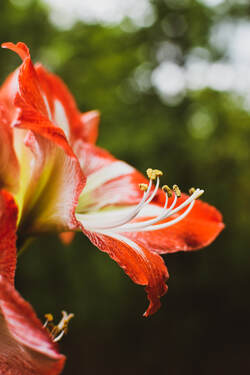
Allison Hammond '21 is a devoted scholar, artist, runner, and member of the school's Global Studies Program. In addition to her many talents, she is also a budding photographer.
How long have you been interested in photography? What got you started?
Well, since I was young, I’ve been constantly surrounded with cameras,
so naturally, I gravitated towards them. When I was 8 years old, I was
gifted my first Sony Cyber-Shot (a little beginner camera that didn’t
take the sharpest of photos) to practice. A few years later, I
received my first “real” camera, a Nikon D100 from my grandfather. And
in 2016, I got a Nikon D5500, which I still use today.
Throughout those years, I’ve learned that photos have this sort of
magical ability not only to recollect forgotten memories and feelings,
just like music, but to tell a story. Photography gives me the ability
to capture a specific moment and freeze it forever.
What do you like to take pictures of?
I enjoy taking photos of nature scenes, especially landscapes.
When I was younger, I was trying still trying to figure out how to use
a camera, so I would take a lot of up close shots. While I still enjoy
taking up close photos, I have shifted my focus towards shooting more
landscapes and low angle perspectives. Since I’m still learning, I am
trying to widen my photography toolbox to include different angles and
perspectives. In the last year or two, I‘ve started to use Adobe
Lightroom (which is a photo editing application) to take my photos to
the next level.
Information on the photograph:
Title: mid afternoon
Edited with Adobe Lightroom
Taken in April of 2020
Interview by Chloe Hunt '21
Student art amid the pandemic: Julia H'Doubler '21
Students experience Glass Menagerie
By Kevin Dinh
Photos from Clue
Images of Fishburn Follies
Singers stretch chords beyond the school's choir
By Emma Cartledge and Meagan Pruitt
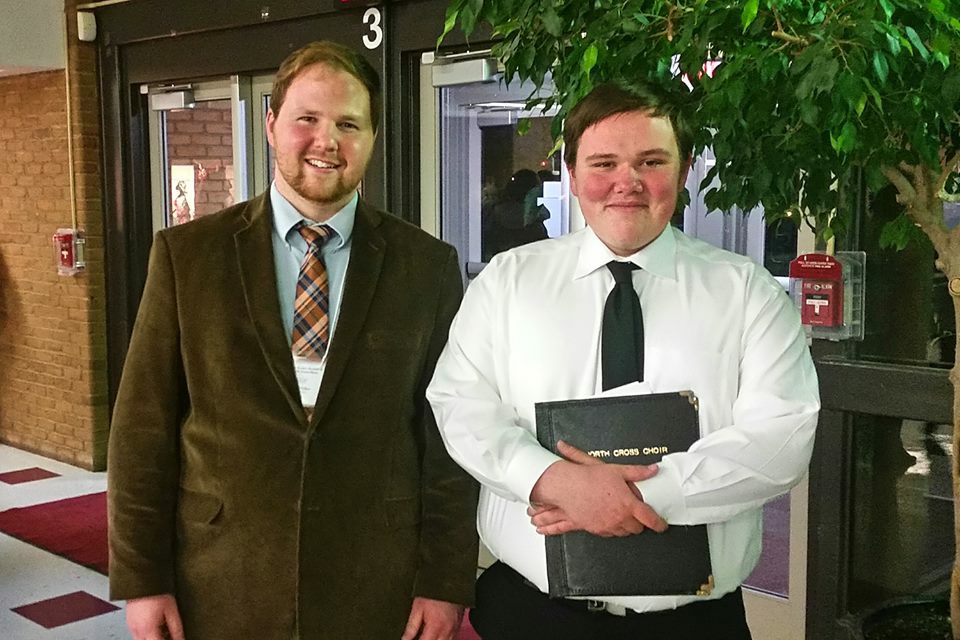
Victor Hugo once said, “Music expresses that which cannot be put into words and that which cannot remain silent.”
Music inspires Jack Fishwick (’16) to express his voice and he is now the second person to make the all-state choir from North Cross after impressing judges at Salem High on Valentine’s Day.
“I’ve always loved theatre and singing,” Fishwick said. “I’ve been in chorus since 4th grade, and I think that’s what really interested me.”
Students may know Fishwick for his character as The Genie in “Aladdin” or Mr. Bumble from “Oliver,” but what they might not know is that a lot of work goes into having his kind of vocal success. Fishwick also has done several plays outside of school, like “The Wizard of Oz” in last summer’s Mill Mountain Theatre production. All of his work in musicals played a role in his preparation for the All-State choir.
“The school play is something I look forward to every year,” Fishwick said. “Every year is something different and I like the acting. It definitely helped for my audition because I’m used to being in front of crowds, so it helped with the nerves.”
As every athlete, musician and student knows, practice makes perfect. Fishwick went to Chorus Director Andrew Miller almost every day at lunch to prepare for his big audition. He also used a website to help him prepare for the eight-bar sight-singing portion of the audition.
“Mr. Miller really helped me prepare for the audition,” Fishwick said. “The website was helpful because the sight seeing is difficult to prepare for.”
During the audition for All-District choir, the person auctioning has to have a song prepared to sing for the audition as well as the eight-bar sight-singing piece. Fishwick’s preparation paid off.
“It was crazy. I didn’t think I was going to make it,” said Fishwick, humbly. “When my name was called, I was totally in shock.”
Daly sings in Salt Lake City
Another singer who has gone to great lengths to embellish their love for the art is Kerin Daly (’15). For spring break, she will be going to Salt Lake City, Utah with the Roanoke Valley Children’s Choir for the American Choral Director’s Association (ACDA). Choir directors from all over the country and the world will come to hear choirs, like Daly’s, that auditioned and were chosen to perform at the national convention. Last year, she went to the Southern ACDA Convention. This Saturday, Daly and her choir will perform twice at the Mormon Tabernacle Cathedral in the Abravanel Hall.
At the end of second grade, Daly auditioned and earned a spot on the choir, and has been participating in it ever since. This is the tenth year she will be singing for the nonprofit organization.
“Singing is important to me because it is something that I love to do whether it is with the choir or singing to myself walking down the hallway,” Daly said. “When I am at a choir rehearsal or concert, I am able to forget about everything else and just focus on singing which is a great stress reliever.”
Music inspires Jack Fishwick (’16) to express his voice and he is now the second person to make the all-state choir from North Cross after impressing judges at Salem High on Valentine’s Day.
“I’ve always loved theatre and singing,” Fishwick said. “I’ve been in chorus since 4th grade, and I think that’s what really interested me.”
Students may know Fishwick for his character as The Genie in “Aladdin” or Mr. Bumble from “Oliver,” but what they might not know is that a lot of work goes into having his kind of vocal success. Fishwick also has done several plays outside of school, like “The Wizard of Oz” in last summer’s Mill Mountain Theatre production. All of his work in musicals played a role in his preparation for the All-State choir.
“The school play is something I look forward to every year,” Fishwick said. “Every year is something different and I like the acting. It definitely helped for my audition because I’m used to being in front of crowds, so it helped with the nerves.”
As every athlete, musician and student knows, practice makes perfect. Fishwick went to Chorus Director Andrew Miller almost every day at lunch to prepare for his big audition. He also used a website to help him prepare for the eight-bar sight-singing portion of the audition.
“Mr. Miller really helped me prepare for the audition,” Fishwick said. “The website was helpful because the sight seeing is difficult to prepare for.”
During the audition for All-District choir, the person auctioning has to have a song prepared to sing for the audition as well as the eight-bar sight-singing piece. Fishwick’s preparation paid off.
“It was crazy. I didn’t think I was going to make it,” said Fishwick, humbly. “When my name was called, I was totally in shock.”
Daly sings in Salt Lake City
Another singer who has gone to great lengths to embellish their love for the art is Kerin Daly (’15). For spring break, she will be going to Salt Lake City, Utah with the Roanoke Valley Children’s Choir for the American Choral Director’s Association (ACDA). Choir directors from all over the country and the world will come to hear choirs, like Daly’s, that auditioned and were chosen to perform at the national convention. Last year, she went to the Southern ACDA Convention. This Saturday, Daly and her choir will perform twice at the Mormon Tabernacle Cathedral in the Abravanel Hall.
At the end of second grade, Daly auditioned and earned a spot on the choir, and has been participating in it ever since. This is the tenth year she will be singing for the nonprofit organization.
“Singing is important to me because it is something that I love to do whether it is with the choir or singing to myself walking down the hallway,” Daly said. “When I am at a choir rehearsal or concert, I am able to forget about everything else and just focus on singing which is a great stress reliever.”
"The Vine"
By Katie Sayers
Vibrant Colors: Katie Sayers’ (‘15) art pieces for AP Art this is year are self-assigned. As an AP student, she has the choice of what theme she wants to make her subject matter in her portfolio. All of her works have fallen under the category of environmental scenes because of her love for nature’s brilliant colors. “I just really like the bright colors that appear in nature,” Sayers said, “so I decided why not try to capture it in my work. The frog is just kind of a little taste of some of the really naturally vibrant things that live on this earth with us, and I really like trying to depict that.”
"Pearls"
By Rebecca Benson
Golden Pearls: Rebecca Benson (‘17) wins a Gold Key from the 2015 Scholastic Art and Writing Awards for the above photo. Her two Gold Key awards will be forwarded for national judging in February. Benson describes how she got the shot. “For the picture ‘Pearls’ I used a Canon Rebel XTi with a Canon macro lens,” Benson said. “It had just rained and there was a Gardenia plant on my porch that had recently bloomed and was covered in water.”
Play executed smoothly thanks to backstage crew
By Campbell Lake
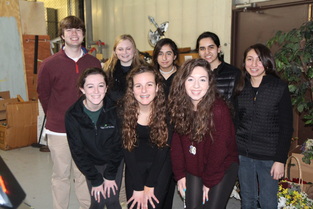
Just as in any theatrical show, the backstage crew of the high school performance of The Importance of Being Earnest proved to be indispensable.
The premiere of the Victorian comedy written by Oscar Wilde was held in the Old Slack Hall on Jan. 22. After the play, the halls were buzzing with enthusiastic comments about the fabulous acting and humorous plot, but only a few acknowledged the backbone of the whole production: the cast behind the curtains.
This year’s International Thespian Society production recruited 12 volunteers into its backstage team. Seniors Rachel Davis, Ciprianna Azar and freshman Heba Imam tackled the make-up for the actors, Ben Smith (‘15) played the piano, Shermeen Imam (‘16), Naima Rasul (‘17), Narmeen Rasul (‘17) and Emily Rock (’15) organized and set props with the help of actresses Caroline McGimsey (‘17) and Claiborne Creasy (‘17). Meg Evett (‘15) and Madison Bloomfield (‘15) were the ringleaders of the backstage crew, taking on the role of co-stage managers as members of the International Thespian Society.
Evett is a veteran crew member, working behind the scenes in all North Cross productions since ninth grade. The Oliver Twist musical last year was her first debut as an assistant stage manager. Bloomfield has been a performer in the school productions since the fourth grade, but for this winter play decided to experience life behind the curtains for a change.
The managers take on many responsibilities in order to make the production run as smoothly as possible. Tasks range from giving simple cues towards actors to mapping out and planning all placements for every single prop in advance.
“You don’t get much recognition,” Evett said, “but I like [stage crew] because I like being organized, so this is a job I can do well.”
“I’m giving it a try with Meg to still be involved even though I’m not in the play,” said Bloomfield of her first stage managing job.
Azar (‘15) also made her make-up debut for this production, after working with Evett last year as a backstage crew member in the spring musical.
“I don’t like being on stage, but I wanted to help,” Azar said. “[Make-up] is something I’m really interested in, so it was a lot of fun.”
Jack Fishwick (‘16) and Vincient Arnold (‘16) were grateful to have such a quality backstage crew to rely on when they were on stage.
“The backstage crew has known each other for so long,” Fishwick said. “They have good chemistry, which makes it easy for them to work together.”
“Having Ben Smith on piano is very unique, and there’s always nice conversation going on,” Arnold said.
Evett was thankful to have Arnold and Jim Card (‘16) to help the actors before their scenes while she was bustling around taking care of other tasks. Arnold and Card prepared the cast by motivating them and getting them pumped up for their roles.
“I don’t like being on stage, but I really like being a part of the play,” said Evett of her experiences with backstage crew. “I still get to know the whole cast and bond with them even if I’m not on stage where the lights shine.”
“The entire cast and crew should be very proud of their accomplishments,” English teacher Michael Schaefer said, “and it’s a testament to the incomparable leadership of their director Mrs. Polly Jones who guided everyone throughout their two months of preparation to perform one of our most successful North Cross theater productions.”
The premiere of the Victorian comedy written by Oscar Wilde was held in the Old Slack Hall on Jan. 22. After the play, the halls were buzzing with enthusiastic comments about the fabulous acting and humorous plot, but only a few acknowledged the backbone of the whole production: the cast behind the curtains.
This year’s International Thespian Society production recruited 12 volunteers into its backstage team. Seniors Rachel Davis, Ciprianna Azar and freshman Heba Imam tackled the make-up for the actors, Ben Smith (‘15) played the piano, Shermeen Imam (‘16), Naima Rasul (‘17), Narmeen Rasul (‘17) and Emily Rock (’15) organized and set props with the help of actresses Caroline McGimsey (‘17) and Claiborne Creasy (‘17). Meg Evett (‘15) and Madison Bloomfield (‘15) were the ringleaders of the backstage crew, taking on the role of co-stage managers as members of the International Thespian Society.
Evett is a veteran crew member, working behind the scenes in all North Cross productions since ninth grade. The Oliver Twist musical last year was her first debut as an assistant stage manager. Bloomfield has been a performer in the school productions since the fourth grade, but for this winter play decided to experience life behind the curtains for a change.
The managers take on many responsibilities in order to make the production run as smoothly as possible. Tasks range from giving simple cues towards actors to mapping out and planning all placements for every single prop in advance.
“You don’t get much recognition,” Evett said, “but I like [stage crew] because I like being organized, so this is a job I can do well.”
“I’m giving it a try with Meg to still be involved even though I’m not in the play,” said Bloomfield of her first stage managing job.
Azar (‘15) also made her make-up debut for this production, after working with Evett last year as a backstage crew member in the spring musical.
“I don’t like being on stage, but I wanted to help,” Azar said. “[Make-up] is something I’m really interested in, so it was a lot of fun.”
Jack Fishwick (‘16) and Vincient Arnold (‘16) were grateful to have such a quality backstage crew to rely on when they were on stage.
“The backstage crew has known each other for so long,” Fishwick said. “They have good chemistry, which makes it easy for them to work together.”
“Having Ben Smith on piano is very unique, and there’s always nice conversation going on,” Arnold said.
Evett was thankful to have Arnold and Jim Card (‘16) to help the actors before their scenes while she was bustling around taking care of other tasks. Arnold and Card prepared the cast by motivating them and getting them pumped up for their roles.
“I don’t like being on stage, but I really like being a part of the play,” said Evett of her experiences with backstage crew. “I still get to know the whole cast and bond with them even if I’m not on stage where the lights shine.”
“The entire cast and crew should be very proud of their accomplishments,” English teacher Michael Schaefer said, “and it’s a testament to the incomparable leadership of their director Mrs. Polly Jones who guided everyone throughout their two months of preparation to perform one of our most successful North Cross theater productions.”
Review: Chorale performance is a hit
By Nathan Seidel
The choral concert, led by director Andrew Miller, offered the audience an exemplary performance from three age groups of Raiders.
The Chorale (upper school) was the highlight of the evening, entertaining the audience with six songs containing several well-performed solos. They even added a little comedy to the production with a parody of “The Twelve Days of Christmas” and a song entitled “Coffee Break,” which is from the musical Miller will direct in the spring –“How to Succeed in Business without Even Trying.” Auditions for the musical are currently going on, and will continue throughout this week.
“There was a lot of unusual music choice,” said Walter Mann, who sings bass or tenor, “but I think we should stick to more classical music.”
During the Chorale portion of the concert, various singers stepped forward and delivered masterful solos, exhibiting the strength and beauty of their voices. One of the most powerful solos was delivered by Jack Fishwick.
“I felt really proud, and I love to sing with the chorale,” said Fishwick, who sings bass or baritone. “I’m pleased that Mr. Miller has confidence in me to deliver a solo.”
The solos are always one of the highlights of the evening, and Miller likes to vary the soloists, giving more singers a chance to shine.
“Sometimes I’ll pick students that have never had a solo before,” said Miller, “and I just want them to go for it.”
The middle school choir also shone brightly, singing selections like I Gave My Love a Cherry and many people’s favorite, “A Charlie Brown Christmas.”
“The middle school truly impressed me,” said Miller, “they worked really hard and they fixed a lot of last minute things.”
The Chorus did a good job of varying the music in the “Holiday Concert,” and while performing several holiday selections, not sticking strictly to holiday music.
“We also have music that is not holiday-themed,” he said, “more just concert pieces, so we’re not singing Christmas music in September.”
The entire ensemble has practiced since the beginning of the year, which shows why Miller dislikes Christmas music in September.
“It takes a lot of time,” Miller said. “We take every spot of the music and fine-tune it as we go.”
The Chorale (upper school) was the highlight of the evening, entertaining the audience with six songs containing several well-performed solos. They even added a little comedy to the production with a parody of “The Twelve Days of Christmas” and a song entitled “Coffee Break,” which is from the musical Miller will direct in the spring –“How to Succeed in Business without Even Trying.” Auditions for the musical are currently going on, and will continue throughout this week.
“There was a lot of unusual music choice,” said Walter Mann, who sings bass or tenor, “but I think we should stick to more classical music.”
During the Chorale portion of the concert, various singers stepped forward and delivered masterful solos, exhibiting the strength and beauty of their voices. One of the most powerful solos was delivered by Jack Fishwick.
“I felt really proud, and I love to sing with the chorale,” said Fishwick, who sings bass or baritone. “I’m pleased that Mr. Miller has confidence in me to deliver a solo.”
The solos are always one of the highlights of the evening, and Miller likes to vary the soloists, giving more singers a chance to shine.
“Sometimes I’ll pick students that have never had a solo before,” said Miller, “and I just want them to go for it.”
The middle school choir also shone brightly, singing selections like I Gave My Love a Cherry and many people’s favorite, “A Charlie Brown Christmas.”
“The middle school truly impressed me,” said Miller, “they worked really hard and they fixed a lot of last minute things.”
The Chorus did a good job of varying the music in the “Holiday Concert,” and while performing several holiday selections, not sticking strictly to holiday music.
“We also have music that is not holiday-themed,” he said, “more just concert pieces, so we’re not singing Christmas music in September.”
The entire ensemble has practiced since the beginning of the year, which shows why Miller dislikes Christmas music in September.
“It takes a lot of time,” Miller said. “We take every spot of the music and fine-tune it as we go.”
Band brings Christmas cheer to New Slack
By Emma Cartledge
Photo by Campbell Lake
Photo by Campbell Lake
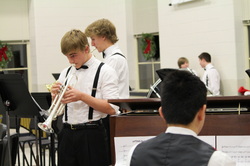
This year’s annual holiday concert was an absolute showstopper featuring festive music preformed by students and directed by Jimmie Donnini.
It was the last holiday concert for seniors Sarah Shaff, Sage Vilgats, Leo Zheng and Harrison Macher. The senior boys wore red vests and the senior girls had red sashes tied around their waists.
“It was very sad knowing that it was my last holiday concert,” Sarah Shaff said. “I always look forward to the holiday concerts, so it’s pretty surreal that I’ll never be in another one.”
The Symphonic rocked out four holiday songs and closed with the holiday classic Santa Baby. They played Santa Baby as the audience members exited the show.
“I think the holiday concerts are the best because we play a lot of Christmas classics,” Gray Pollock said (‘18). “My favorite piece is Santa Baby because it’s up beat and fun to play.”
Not all members of the band were present at the concert. The flute star, Helen Schmedtje, was very ill and could not preform.
“I think it makes other players nervous when someone is missing,” Donnini said. “When you’re used to playing with someone everyday and they play out really loud, and then they’re gone, you know that it puts the pressure back on you and you feel like you stand out more.”
Senior Sage Vilgats agreed that it was difficult to play with out her.
“It was definitely hard compensating for sound. In the march we played, Helen usually plays the piccolo, so it was difficult trying to make up for the sound loss,” Vilgats said. “Helen is almost always in class, so it was hard for Katherine, Madison and I to get used to not having her there with us.”
The band kept audience members entertained and showed off what they can do.
“My favorite song that they played was Santa Baby because it was upbeat and fun to listen to,” Jordan Lowery said (’16). “I this was one of the best concerts yet.”
Meg Evett (’15) agreed that the best piece was Santa Baby.
They closed the show with Christmas Eve/Sarajevo.
“I probably liked our Sarajevo piece best just because it was big and full and it reminded me of an exciting evening but somewhat scary,” Donnini said. “It was peaceful at the beginning then all of a sudden the war broke out.”
It was the last holiday concert for seniors Sarah Shaff, Sage Vilgats, Leo Zheng and Harrison Macher. The senior boys wore red vests and the senior girls had red sashes tied around their waists.
“It was very sad knowing that it was my last holiday concert,” Sarah Shaff said. “I always look forward to the holiday concerts, so it’s pretty surreal that I’ll never be in another one.”
The Symphonic rocked out four holiday songs and closed with the holiday classic Santa Baby. They played Santa Baby as the audience members exited the show.
“I think the holiday concerts are the best because we play a lot of Christmas classics,” Gray Pollock said (‘18). “My favorite piece is Santa Baby because it’s up beat and fun to play.”
Not all members of the band were present at the concert. The flute star, Helen Schmedtje, was very ill and could not preform.
“I think it makes other players nervous when someone is missing,” Donnini said. “When you’re used to playing with someone everyday and they play out really loud, and then they’re gone, you know that it puts the pressure back on you and you feel like you stand out more.”
Senior Sage Vilgats agreed that it was difficult to play with out her.
“It was definitely hard compensating for sound. In the march we played, Helen usually plays the piccolo, so it was difficult trying to make up for the sound loss,” Vilgats said. “Helen is almost always in class, so it was hard for Katherine, Madison and I to get used to not having her there with us.”
The band kept audience members entertained and showed off what they can do.
“My favorite song that they played was Santa Baby because it was upbeat and fun to listen to,” Jordan Lowery said (’16). “I this was one of the best concerts yet.”
Meg Evett (’15) agreed that the best piece was Santa Baby.
They closed the show with Christmas Eve/Sarajevo.
“I probably liked our Sarajevo piece best just because it was big and full and it reminded me of an exciting evening but somewhat scary,” Donnini said. “It was peaceful at the beginning then all of a sudden the war broke out.”
Albert Newberry plays "Boogie Woogie" for assembly after unleashing the song at the talent show
Albert Newberry leads Jazz Consultants quartet at Third St. Cafe on April 25
Macher excels in both art and horseback riding
by Kirby Evett
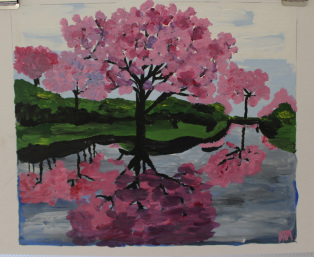
Madison Macher (’14) is a standout when it comes to dedicating herself to a hobby.
Maybe that’s because she found her passion at such a young age, follows a family legacy and makes the hour-long trek out to the barn any time she rides.
“The first time I rode a horse was at my 4-year-old birthday party,” Macher said. “We had pony rides for all my friends. So from that day on I can blame my
dad for making me fall in love with horses and horseback riding.”
After being introduced to the hobby at such an early age, Macher participated in riding camps throughout lower school to help further her love for riding.
Beth Macher, Madison’s mom, is also an avid horseback rider, which was an advantage for Macher when first starting up the sport.
When Macher was 10 years old she took up lessons where her mom rode and has continued to take lessons since then, although where she takes them has differed.
Macher now rides at the Washington and Lee University Barn in Lexington, Va. She works with trainer Gordon Reistrup and horse Julio almost everyday after school.
Macher’s dedication shows due to the frequency with which she goes to the barn and the amount of time it takes up in her day— the drive out to Lexington takes a total of two hours there and back, just on the road.
The first time Macher competed in show was at 12-years-old, but her real breakthrough was in 8th grade.
“My 8th grade year, I competed on a high school riding team and was first in the region in my class,” said Macher on one of her greatest accomplishments. “Then I was first in my zone, and I had the chance to compete at Nationals in Atlanta, Georgia at the facility where the 1996 Summer Olympics were held.”
Many people regard Macher as an accomplished rider who has a passion for the sport. After all, even her senior speech incorporated her love for horses.
Besides, spending time training with her own horse Julio, Macher also spends time assisting kids with disabilities at a therapeutic riding program. Healing Strides, the program Macher volunteers her time with, is one that is very near and dear to her heart.
Macher still actively competes in horse shows and trains each and every time she goes to Lexington.
“I like the competitive aspect of it and I like the challenge of the unexpected,” Macher said. “Horses have very temperamental personalities and you never know what they are going to do, so I go into the ring prepared for the unexpected.
“I also enjoy the relationship you can build with your horse.”
Macher knows that riding will always have a huge impact on her life and she plans to join the riding team wherever she attends next fall.
Maybe that’s because she found her passion at such a young age, follows a family legacy and makes the hour-long trek out to the barn any time she rides.
“The first time I rode a horse was at my 4-year-old birthday party,” Macher said. “We had pony rides for all my friends. So from that day on I can blame my
dad for making me fall in love with horses and horseback riding.”
After being introduced to the hobby at such an early age, Macher participated in riding camps throughout lower school to help further her love for riding.
Beth Macher, Madison’s mom, is also an avid horseback rider, which was an advantage for Macher when first starting up the sport.
When Macher was 10 years old she took up lessons where her mom rode and has continued to take lessons since then, although where she takes them has differed.
Macher now rides at the Washington and Lee University Barn in Lexington, Va. She works with trainer Gordon Reistrup and horse Julio almost everyday after school.
Macher’s dedication shows due to the frequency with which she goes to the barn and the amount of time it takes up in her day— the drive out to Lexington takes a total of two hours there and back, just on the road.
The first time Macher competed in show was at 12-years-old, but her real breakthrough was in 8th grade.
“My 8th grade year, I competed on a high school riding team and was first in the region in my class,” said Macher on one of her greatest accomplishments. “Then I was first in my zone, and I had the chance to compete at Nationals in Atlanta, Georgia at the facility where the 1996 Summer Olympics were held.”
Many people regard Macher as an accomplished rider who has a passion for the sport. After all, even her senior speech incorporated her love for horses.
Besides, spending time training with her own horse Julio, Macher also spends time assisting kids with disabilities at a therapeutic riding program. Healing Strides, the program Macher volunteers her time with, is one that is very near and dear to her heart.
Macher still actively competes in horse shows and trains each and every time she goes to Lexington.
“I like the competitive aspect of it and I like the challenge of the unexpected,” Macher said. “Horses have very temperamental personalities and you never know what they are going to do, so I go into the ring prepared for the unexpected.
“I also enjoy the relationship you can build with your horse.”
Macher knows that riding will always have a huge impact on her life and she plans to join the riding team wherever she attends next fall.
The technology era: digital world, digital art
by Paxton Helmer
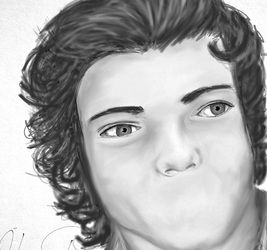
In this generation, technology has an impact on every aspect of life, even art.
With a lot of patience and careful concentration, Katie Sayers (’15) composes a piece of artwork on her iPad, constructing each feature with the tip of the finger.
Virtual art can be a difficult task. The colors are bold and cannot be mixed, there are no specific writing utensils so you have to use your finger, and with every stroke something could go wrong making it difficult to fix. However, Sayers conquers the art with diligence.
“It takes a lot of patience," Sayers said. "I started this picture about five months ago and I still haven't had the sanity to finish it and draw the mouth. It's kind of a painful process."
Sayers likes drawing portraits and the one she is currently working on is of the young pop-star Harry Styles. Every detail is sketched with gentle care to ensure the artwork resembles the vocalist. To ease this digital artistic challenge, Sayers uses an app called "Pen and Ink: a watercolor notebook" to add the many different features to her art. This app allows the artist to choose the digital utensil, including three different paint brushes, a pencil and a pen, enables you to choose the color without having the flexibility to mix any colors together, and allows the artist to alter the texture and contrast of each individual stroke.
Sayers is known for her artistry an artist that composes tangible art including sketches, paintings and drawings. But this form of art, digitally, is a first for her.
“I've never actually done digital art before, so this portrait was my first attempt since I am so used to drawing faces," Sayers said. "I feel like digital art is a lot harder too because you have to choose settings on what your drawing with instead of just using a pen or pencil. Like having to choose contrast, texture, or thickness is a lot harder that just having a plain old pencil."
In general, Sayers is a talented artist and is up for any artistic task.
“She is talented, very prolific, and she is very organized,” Annette Pfaeffle said. “She picks up things very quickly. She definitely has a natural talent; she has an affinity towards the arts. You can give her any project and right away she has a vision and can execute it.”
With a lot of patience and careful concentration, Katie Sayers (’15) composes a piece of artwork on her iPad, constructing each feature with the tip of the finger.
Virtual art can be a difficult task. The colors are bold and cannot be mixed, there are no specific writing utensils so you have to use your finger, and with every stroke something could go wrong making it difficult to fix. However, Sayers conquers the art with diligence.
“It takes a lot of patience," Sayers said. "I started this picture about five months ago and I still haven't had the sanity to finish it and draw the mouth. It's kind of a painful process."
Sayers likes drawing portraits and the one she is currently working on is of the young pop-star Harry Styles. Every detail is sketched with gentle care to ensure the artwork resembles the vocalist. To ease this digital artistic challenge, Sayers uses an app called "Pen and Ink: a watercolor notebook" to add the many different features to her art. This app allows the artist to choose the digital utensil, including three different paint brushes, a pencil and a pen, enables you to choose the color without having the flexibility to mix any colors together, and allows the artist to alter the texture and contrast of each individual stroke.
Sayers is known for her artistry an artist that composes tangible art including sketches, paintings and drawings. But this form of art, digitally, is a first for her.
“I've never actually done digital art before, so this portrait was my first attempt since I am so used to drawing faces," Sayers said. "I feel like digital art is a lot harder too because you have to choose settings on what your drawing with instead of just using a pen or pencil. Like having to choose contrast, texture, or thickness is a lot harder that just having a plain old pencil."
In general, Sayers is a talented artist and is up for any artistic task.
“She is talented, very prolific, and she is very organized,” Annette Pfaeffle said. “She picks up things very quickly. She definitely has a natural talent; she has an affinity towards the arts. You can give her any project and right away she has a vision and can execute it.”
Advanced student artists take on parody project with paint
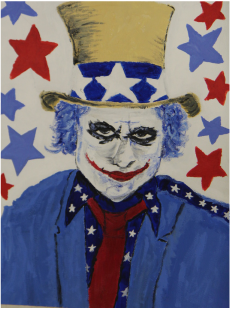
“I chose the icon because I wanted to re-create the Joker as a paraody for the assignment. I did this by dressing him in the American colors and putting a hat on him like Uncle Sam. This is a parody because it makes him seem as if he is a hero figure, and in the movies and comics he is all about chaos and evil,” Ben Coleman (‘15) said.
Coleman completed the parody project this week after working on the Joker for nearly two weeks. “My favorite part was probably just making him a hero figure because no one ever really sees the Joker in that way.
Photo by Meagan Pruitt
Coleman completed the parody project this week after working on the Joker for nearly two weeks. “My favorite part was probably just making him a hero figure because no one ever really sees the Joker in that way.
Photo by Meagan Pruitt
Beginner art students explore Van Gogh's paintings
|
Copper Vase: Danielle Farmer (‘16) shines through in Mrs. Pfaeffke’s Beginner Art course. The class changes in stiles of art each term: the fall ncluded drawing, the winter has been in depth painting, and
this upcoming spring will dive into sculpture. “The use of analogous color in a painting and how they create harmony through out your work [is what I have learned],” Farmer said. Photo by Meagan Pruitt |
"I like getting to learn how to use paints more because I've never Flowers in a Vase: Areej Hashmi (‘17) has been working on Van Gogh’s piece, “Flowers in a Vase.” Hashmi’s last art project of the term has taken her nearly two weeks, but like most, she is expecting to finish the piece in class today. She relishes “the satisfaction of painting,” but she mainly joined the class to get her art credit. Photo by Meagan Pruitt
|
Luminous Sunflower: Ciprianna Azar (‘15) signed up for the class because of her fascination in 3D art and her iinexpierence in an art class. Azar has been working on Vincent Van Gogh’s sunflower painting for the past week and plans on adding the final touches today. “Although painting is challenging, I like it much better than just drawing because it gives a piece life,” Azar said. Photo by Meagan Pruitt
|
Advanced studio students make images by words
Gentle touch: (image on left) In the midst of December, Bailey Sanders and the rest of the Advanced Studio Design students used calligraphy pens to draw images made purely of words that describe the picture. Sander’s drawing consisted of words pertaining peace such as giving, faith and love. “It took me about two weeks in class and a lot of my own time,” Sanders said. For the right image, the word “grief ” portrays the facial expression by Jim Card ('16). Delano Roosevelt displays "giddy" genre by Katie Sayers ('15).
Art students earn Scholastic awards and mentions

Shine Through and Slowly: Rebecca Benson (‘17) focuses her lens on the sunlight through the tree leaves for an assignment for Upper School Art Teacher Annette Pfaeffle. Benson is taking part in her one of three required competition art entries. She received two Honorable
Mention Awards for her photographs, one of which was “Shine Through and Slowly” and “Gradually.”
Mention Awards for her photographs, one of which was “Shine Through and Slowly” and “Gradually.”
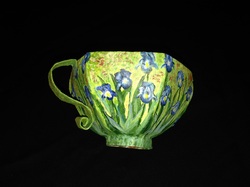
Paper mache tea cup: Jane Ward (‘16) has been taking Annette Pfaefelle’s art course for the second year when she earned a Silver Key award for her Van Gogh tea cup.
Advanced Studio Design, students are required to enter three art competitions each year. In the first trimester, the students were told to create a teacup out of cardboard templates, tape, paper
mache and paint for their first project of the year. In a few weeks,Ward made a teacup, painted it inside and out with cool colors, created a saucer and painted it front and back with bold colors in contrast. On Jan. 23, Ward recieved the news about her Scholastic Award entry. “When Mrs. Pfaefelle told me that my project had won an award, I was very surprised because I was not expecting it at all! It’s such a special feeling to know that others recognize your art, and this award is very encouraging. Photo by Robert Robillard
Advanced Studio Design, students are required to enter three art competitions each year. In the first trimester, the students were told to create a teacup out of cardboard templates, tape, paper
mache and paint for their first project of the year. In a few weeks,Ward made a teacup, painted it inside and out with cool colors, created a saucer and painted it front and back with bold colors in contrast. On Jan. 23, Ward recieved the news about her Scholastic Award entry. “When Mrs. Pfaefelle told me that my project had won an award, I was very surprised because I was not expecting it at all! It’s such a special feeling to know that others recognize your art, and this award is very encouraging. Photo by Robert Robillard
Students excel in art studio; introductory and AP
|
Still life in the studio: (above image) Austin Boone (‘17) sketches a masterpiece of the still life project assigned by Upper School Art Teacher Annette Pfaeffle. Boone is taking part in her trimester-long Introduction to Drawing course. This course is created to help students grasp the basic concepts of art. The remaining trimester courses include Introduction to Painting as well as Introduction to 3D art. This well-rounded years worth of art gives the students a perspective of what art is like. Boone especially enjoys his time in art class. “I like art because I can express myself,” Boone said. His only other experience with art has been through school art courses in Middle School taught by Susanna Quinn. He claims he likes art class simply because it is fun.
|
AP art scholar: (image to the left) Over the past few years, Madison Macher (‘14) has worked hard to become an AP art student. With all of the painting, sketching and photography work she did over the summer, she has improved her art skills to prepare for the AP course which concludes in an AP exam.“This is my third year of art,” Macher said. “I’ve improved over the years immensely.” This piece was made with the intention of being part of her “concentration.” In the AP art curriculum, the students are given problems and are supposed to solve them through art expression. “My main inspiration about the piece was on the darker side, I wanted to make it kind of like an asylum, that’s what it is,” Macher said. “I wanted the lighting to really stand out, and the light bulb and the shading was also really important to me. Even though it was more on the dark side, the lighting made it even darker.”
|
The stillness of life: (image to the right) Laith Fada (‘16) is taking Annette Pfaefelle’s beginning art course this year to advance his knowledge of art. This piece of art is a still life structured by Pfaefelle to develop the artist’s eye for interpreting the shapes of the images. The students draw the still life from wherever point they are sitting in the classroom, so many of the art pieces have a different angle view of the still life. Fada enjoys this class because art allows for freedom of expression. “I have a love for art,” Fada said. “Art is a way to express what words can’t.” Fada is eager to begin the next trimester, Introduction to Painting, because he loves to paint. His favorite things to paint are landscapes because of the beauty of the external world.
|
